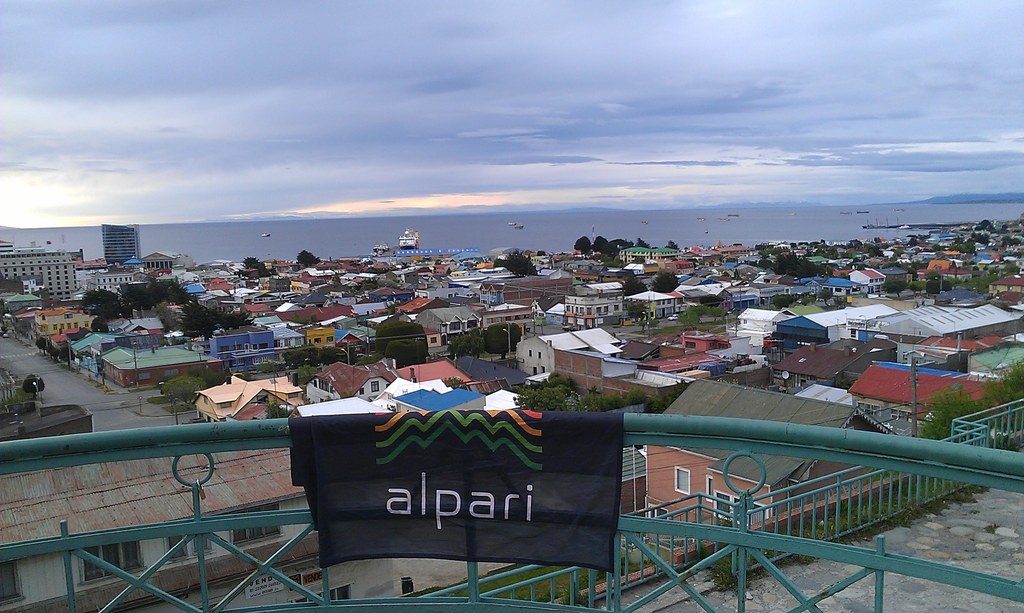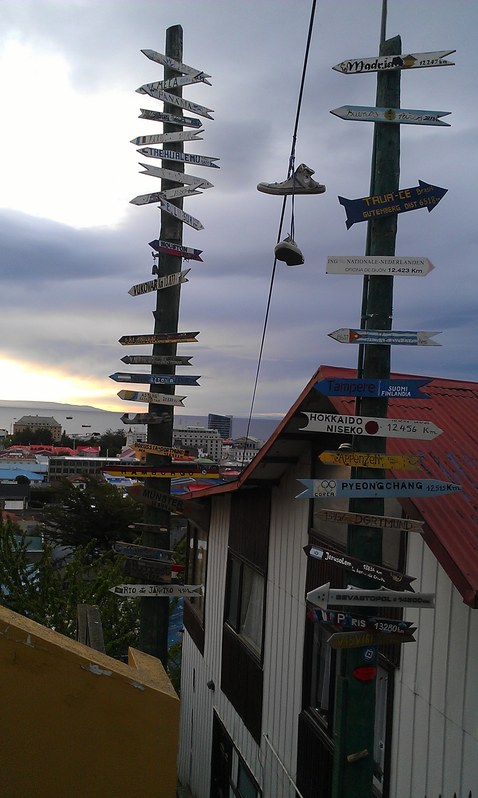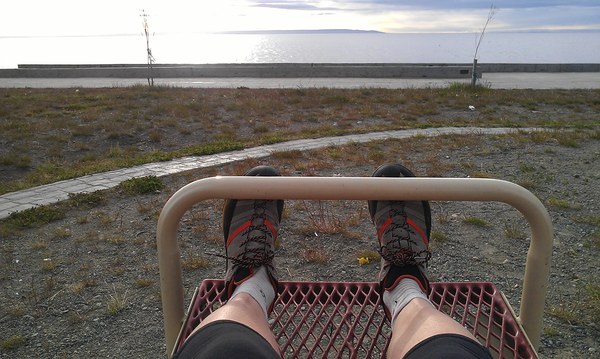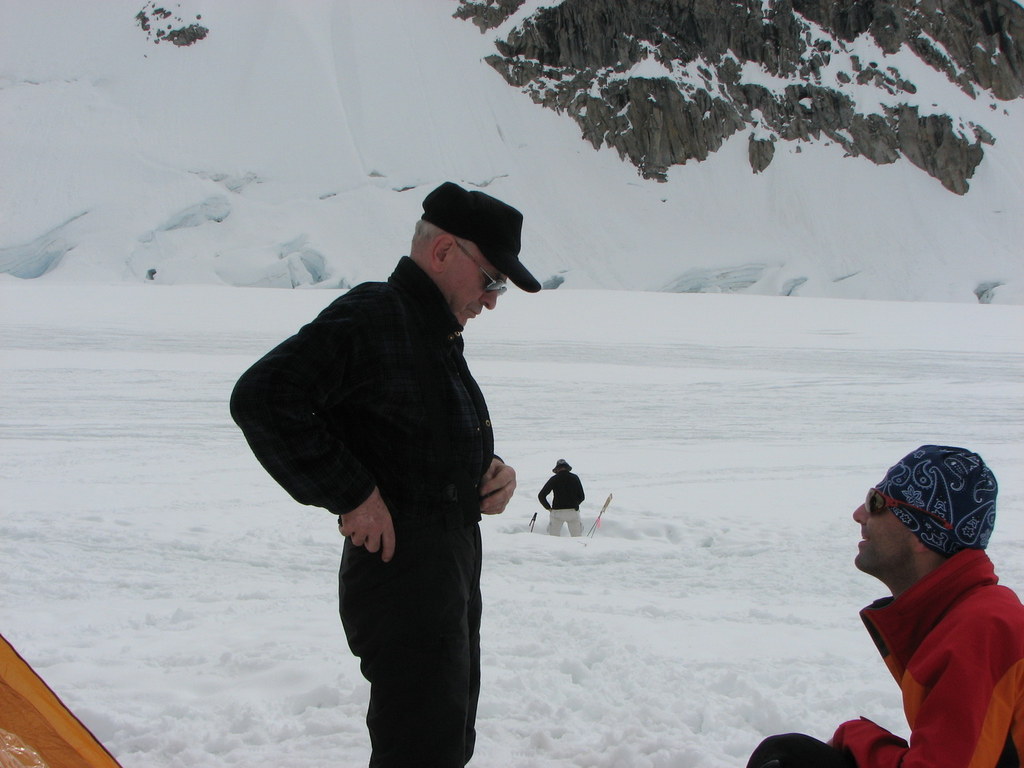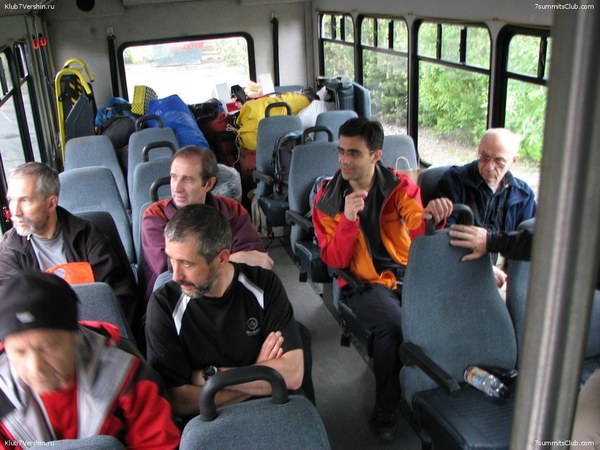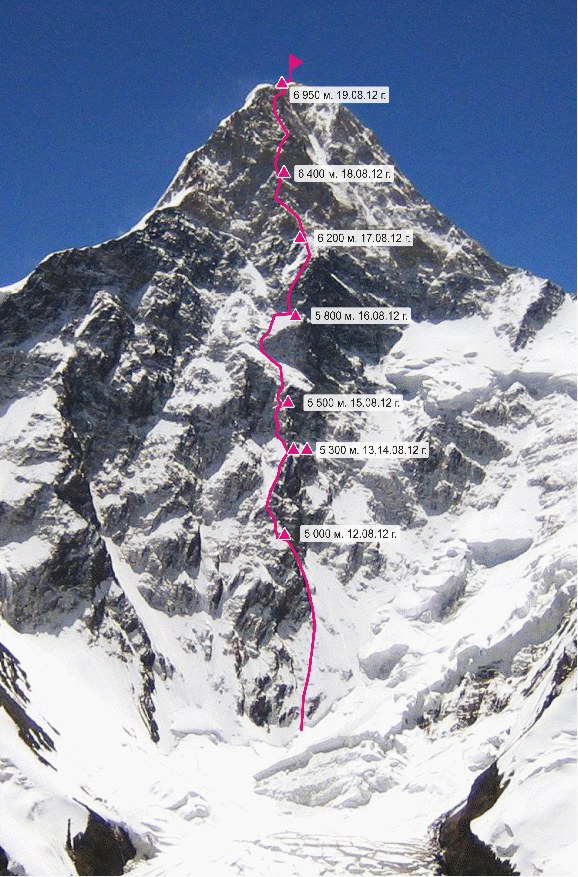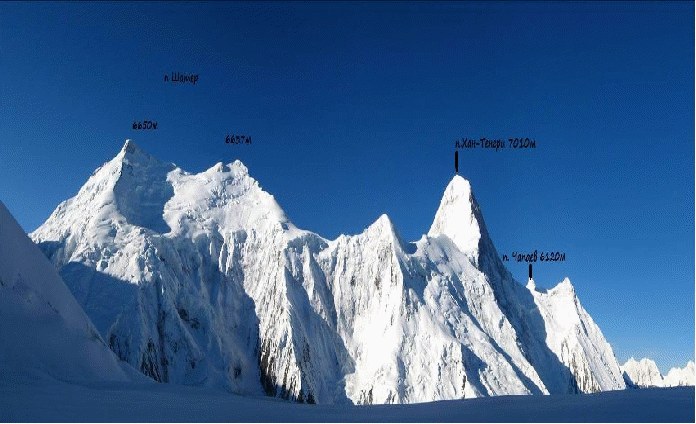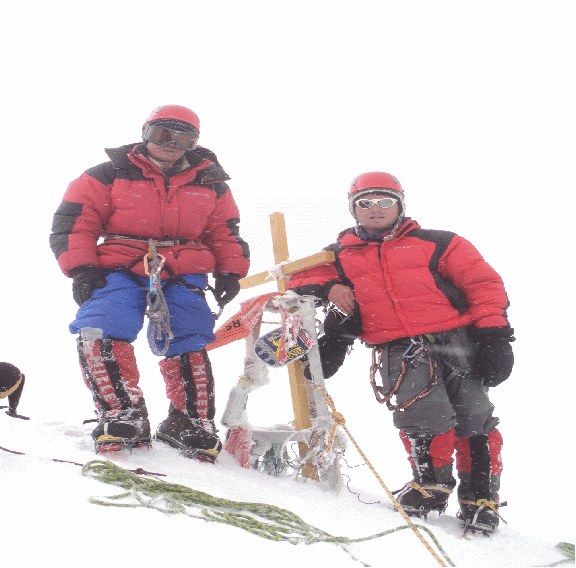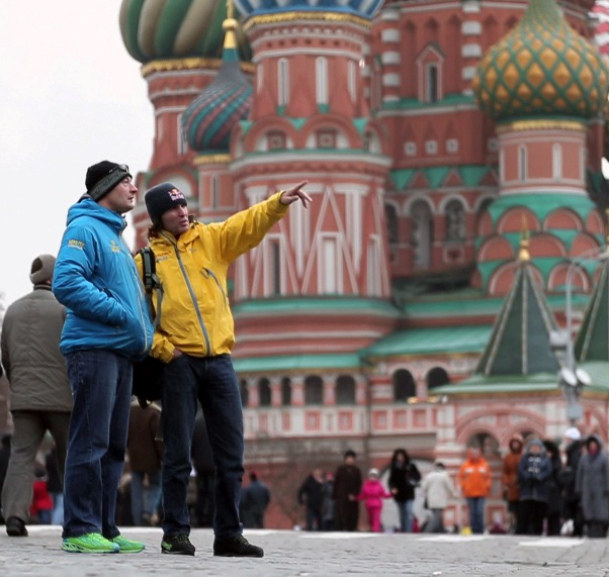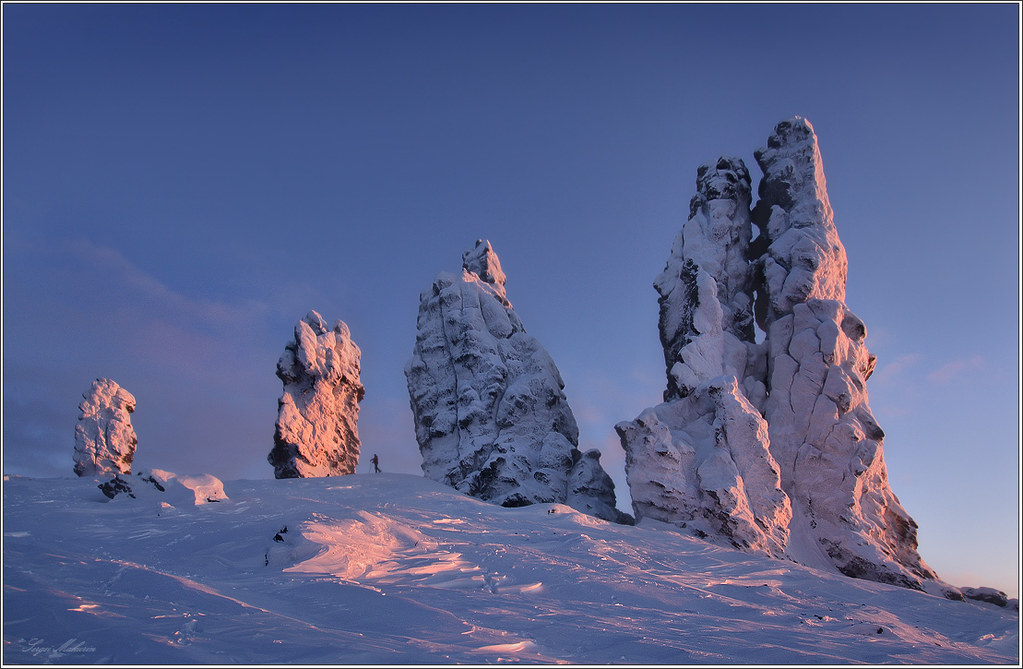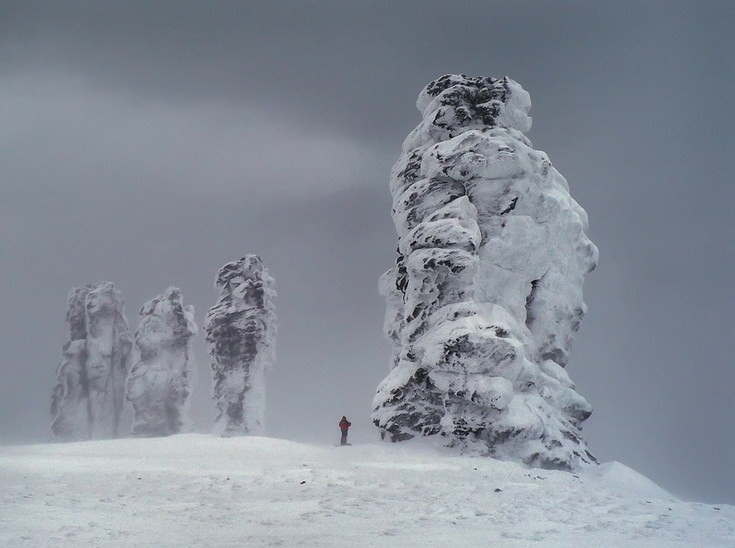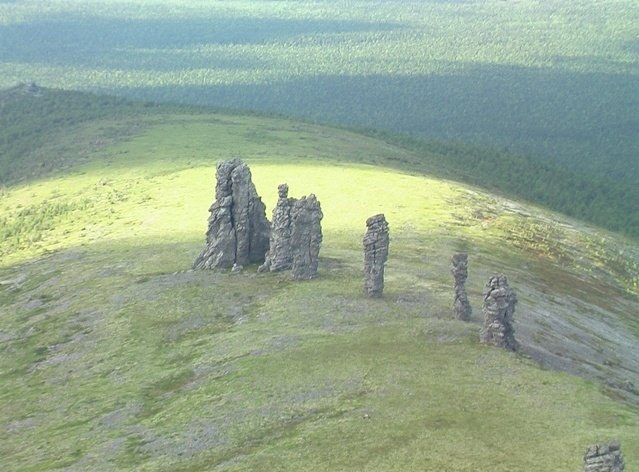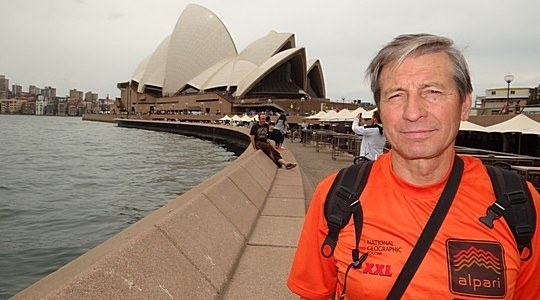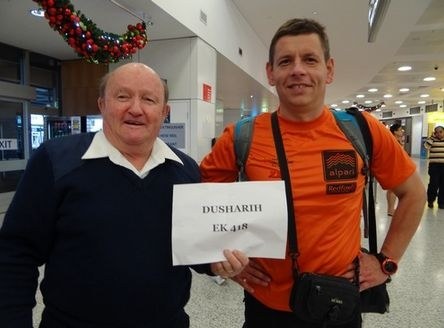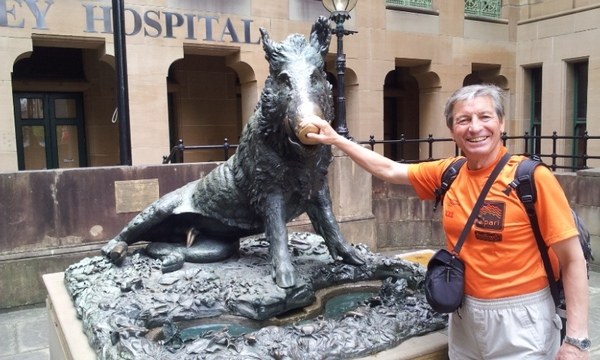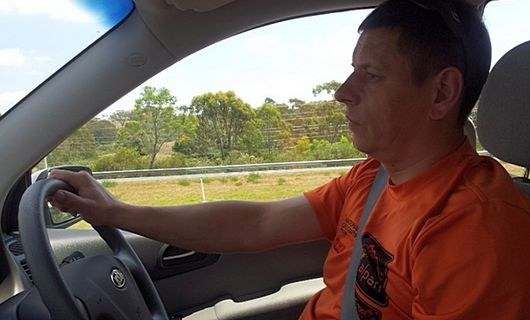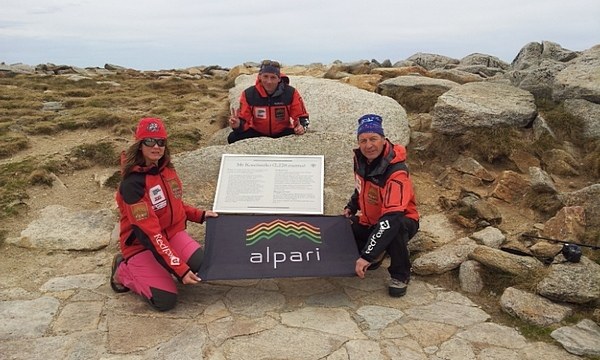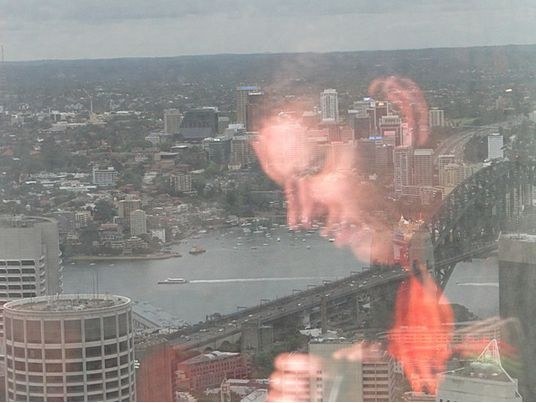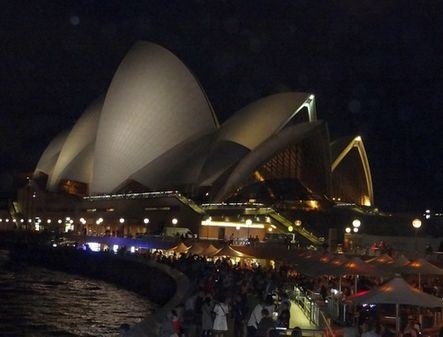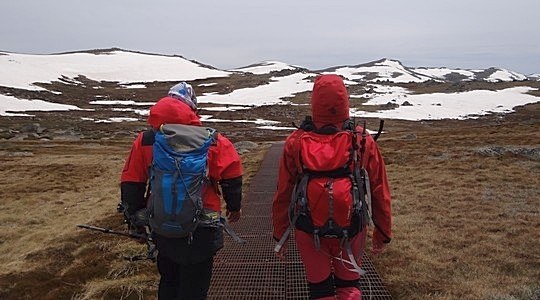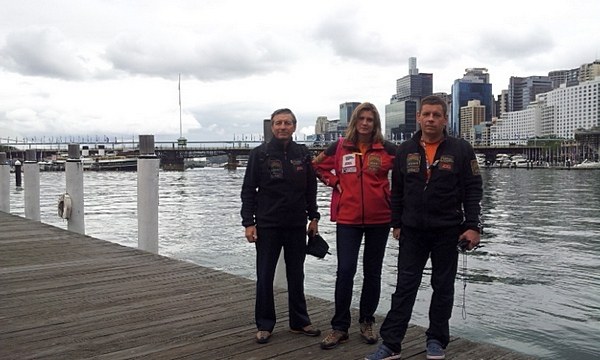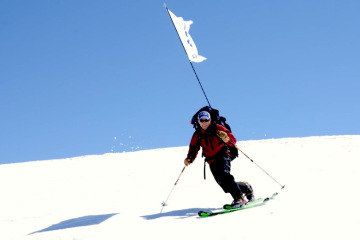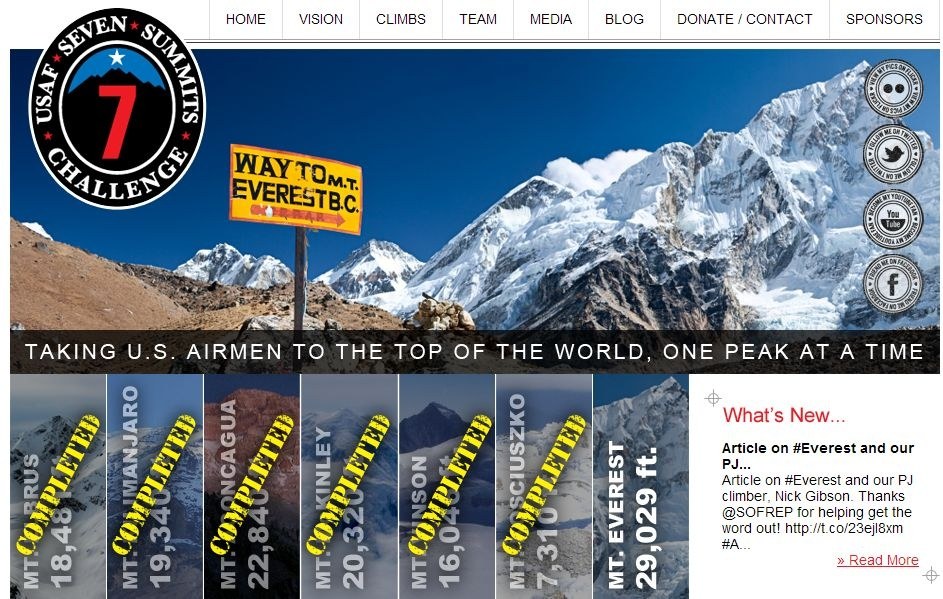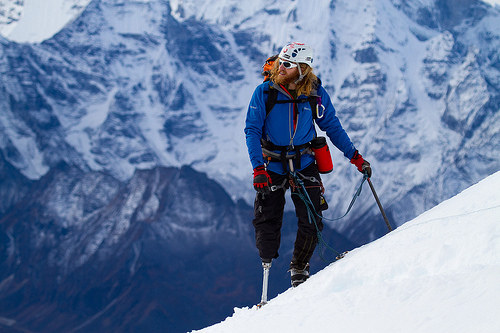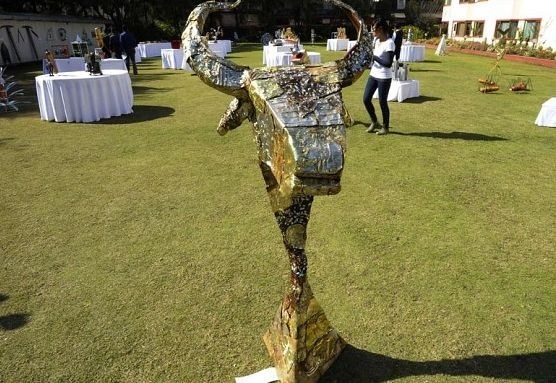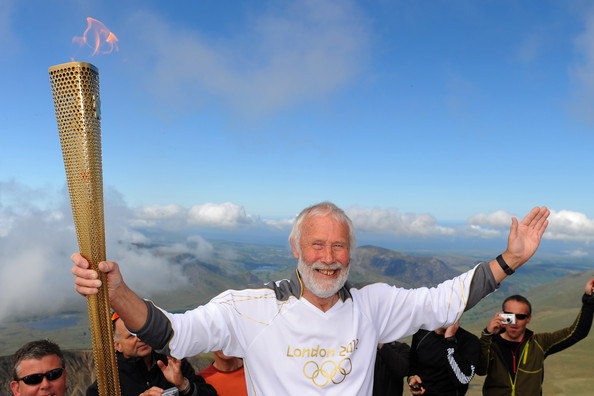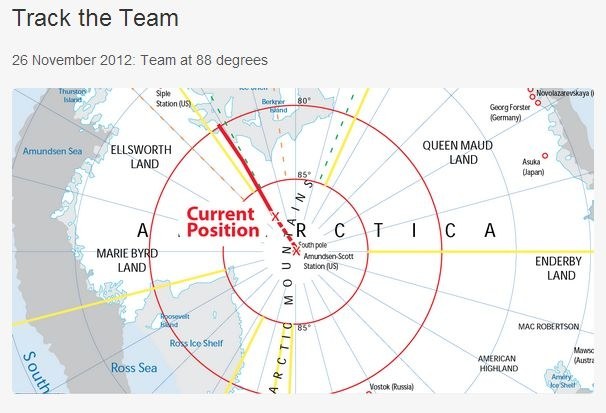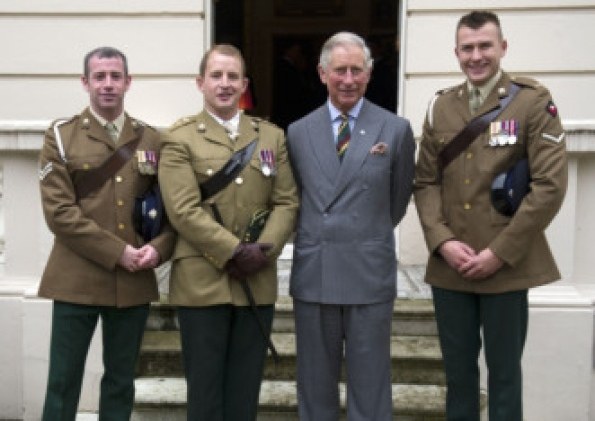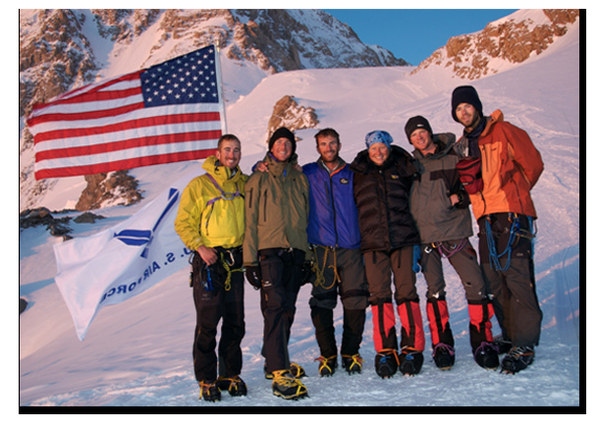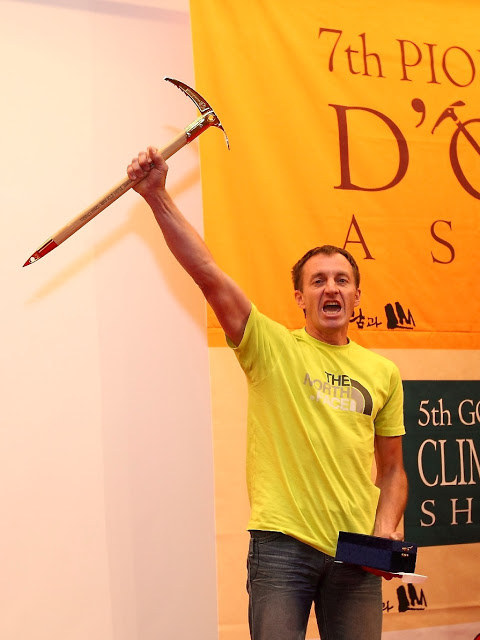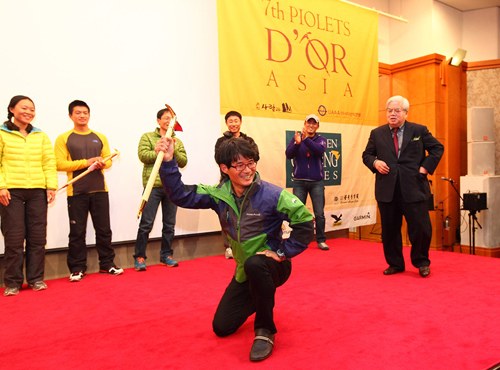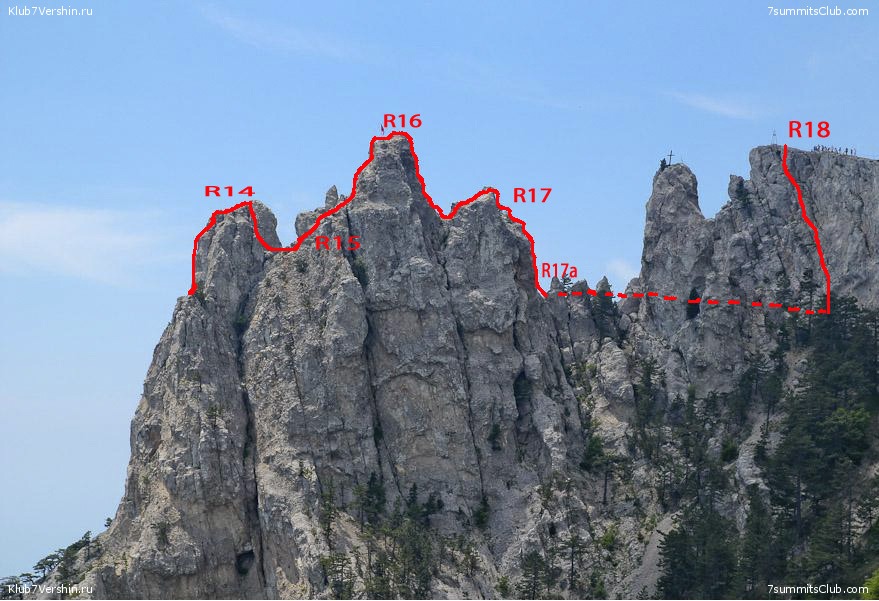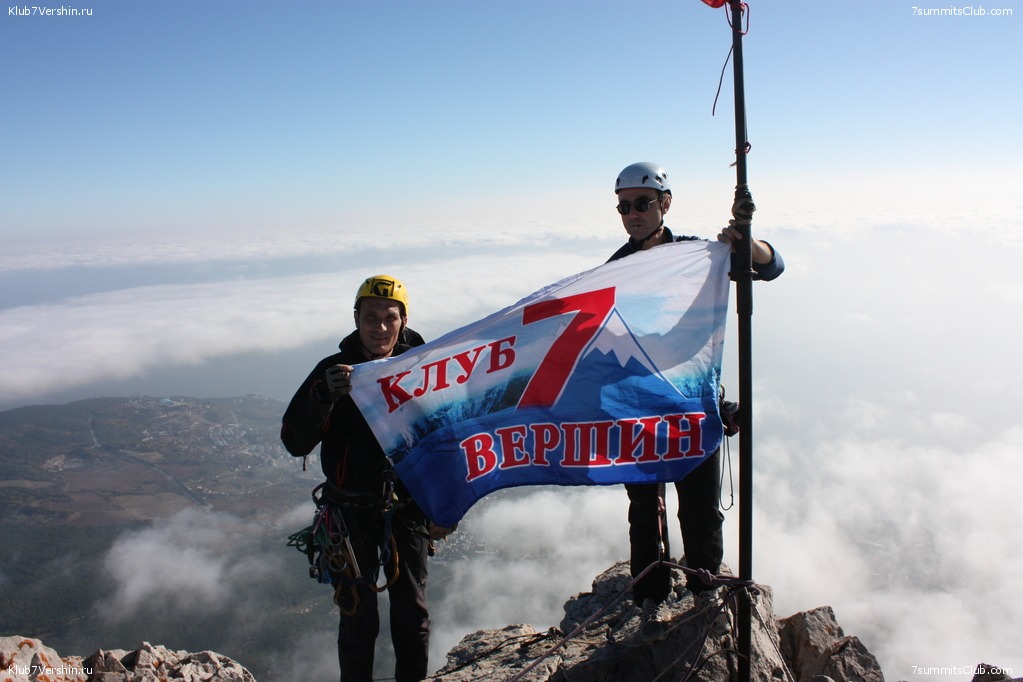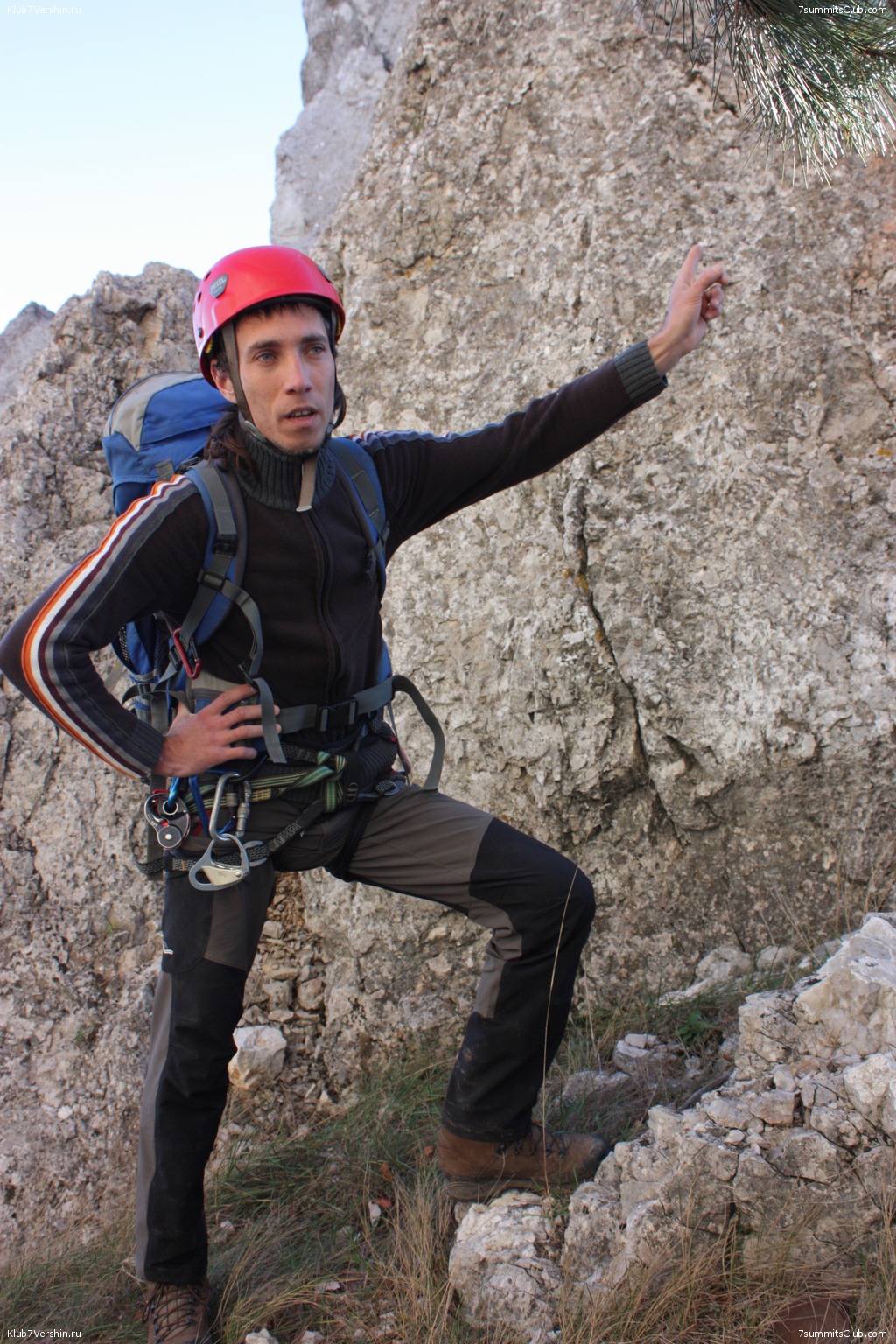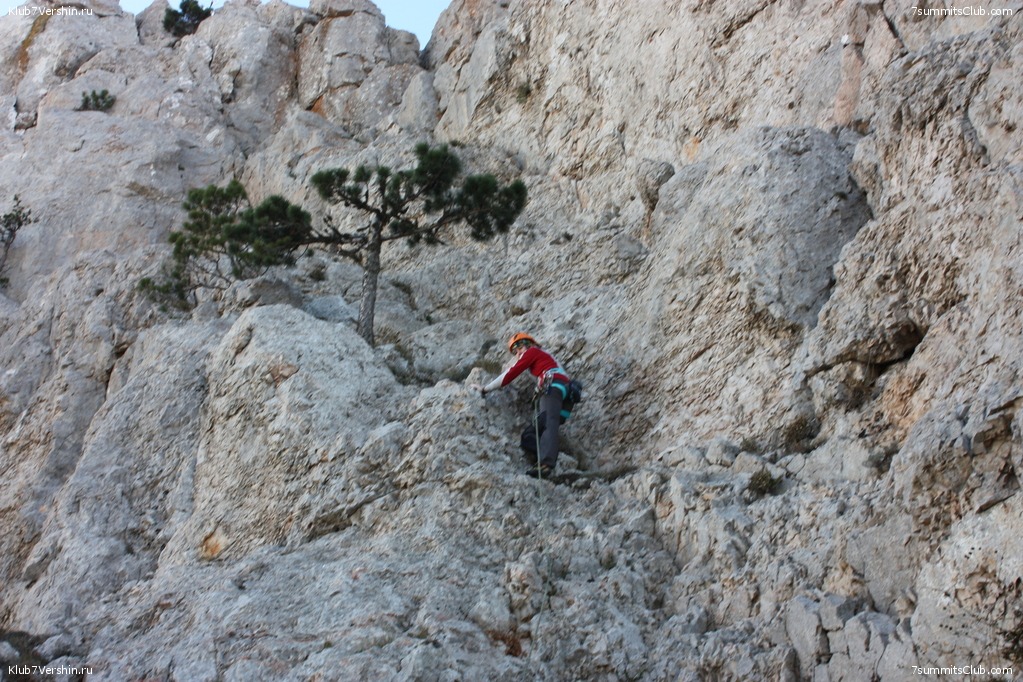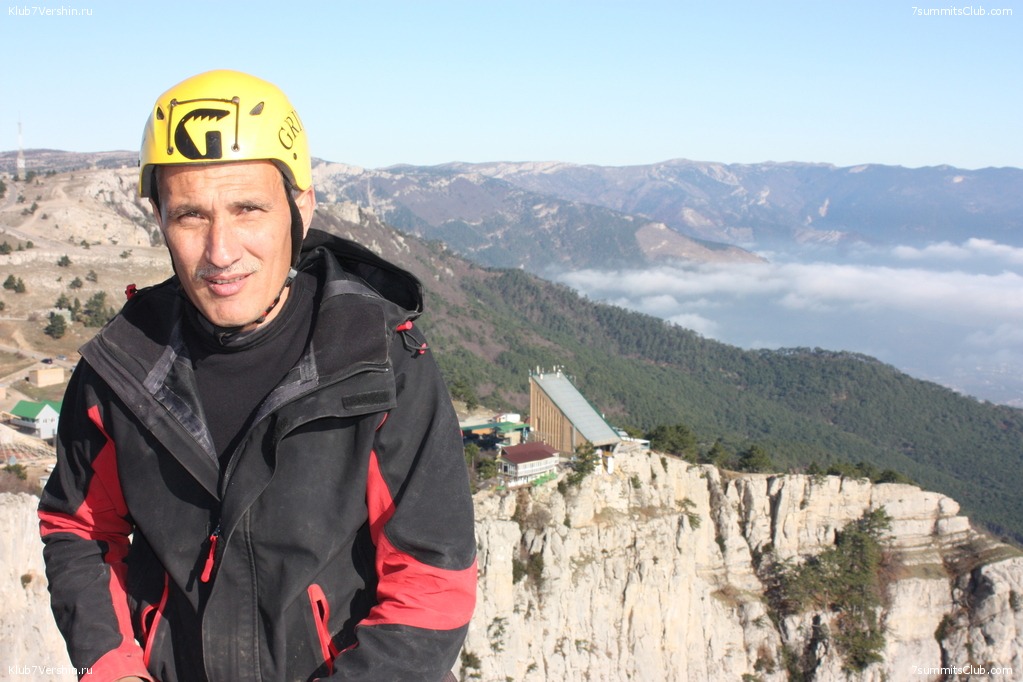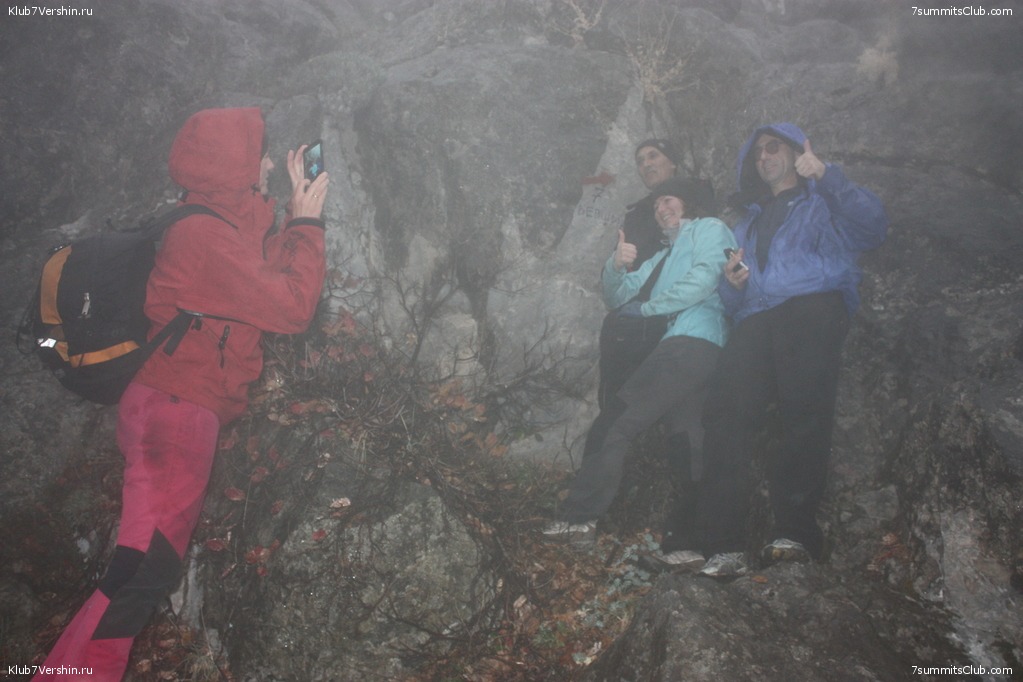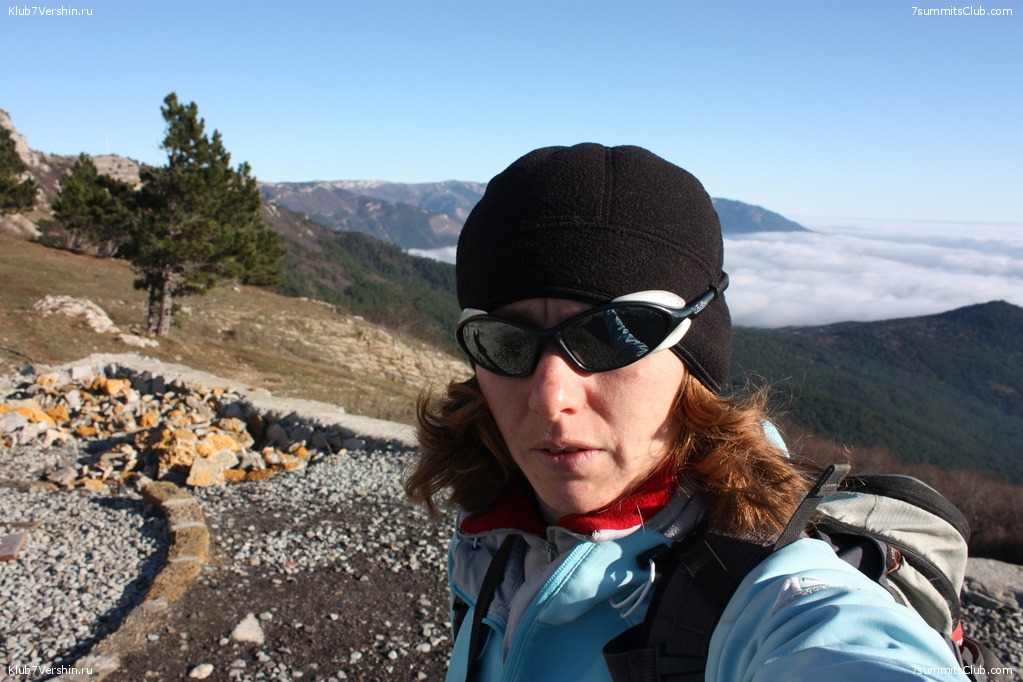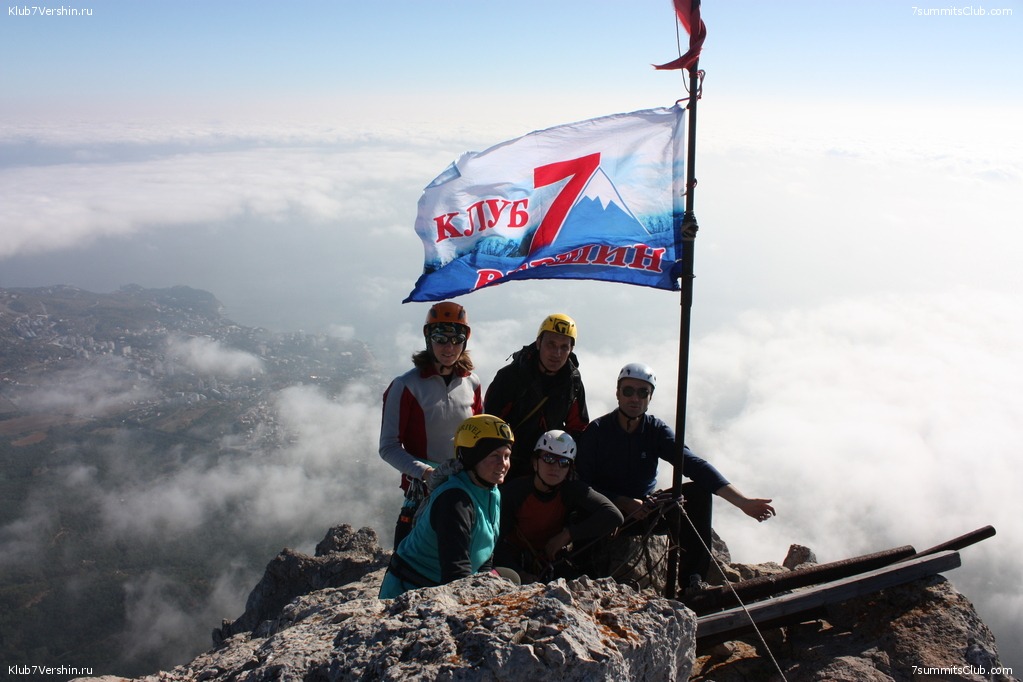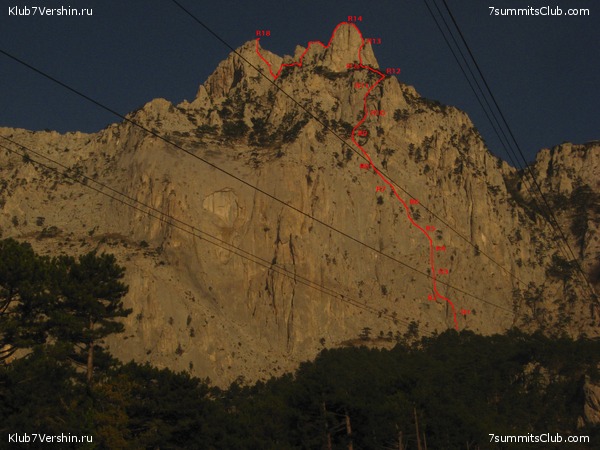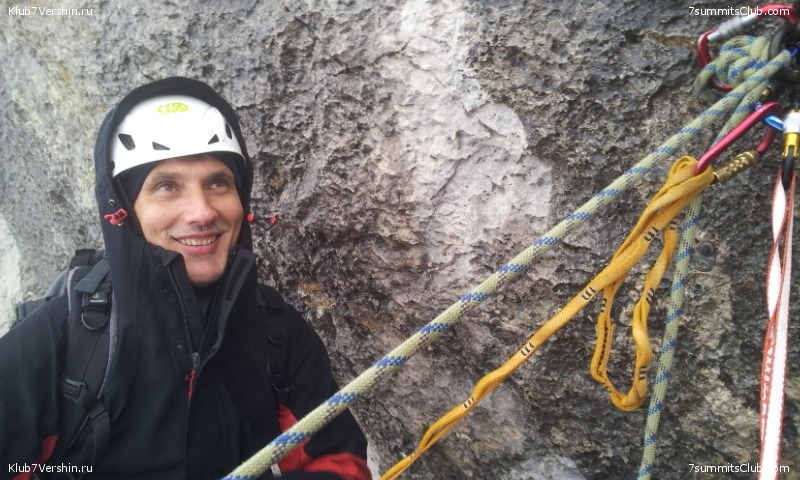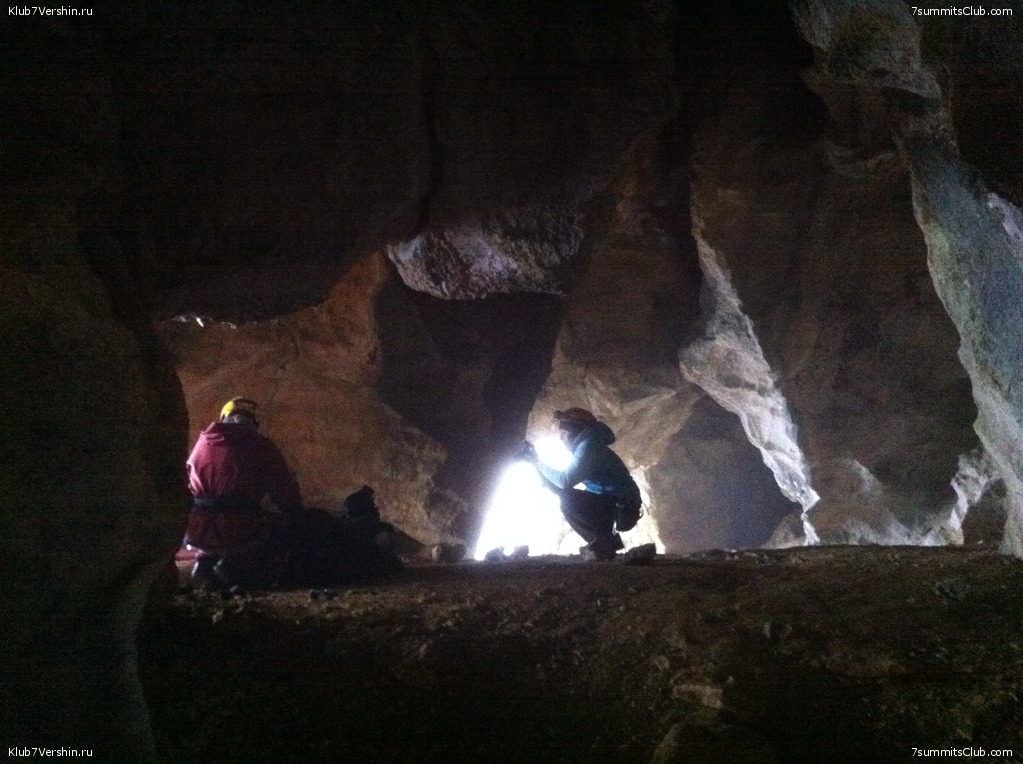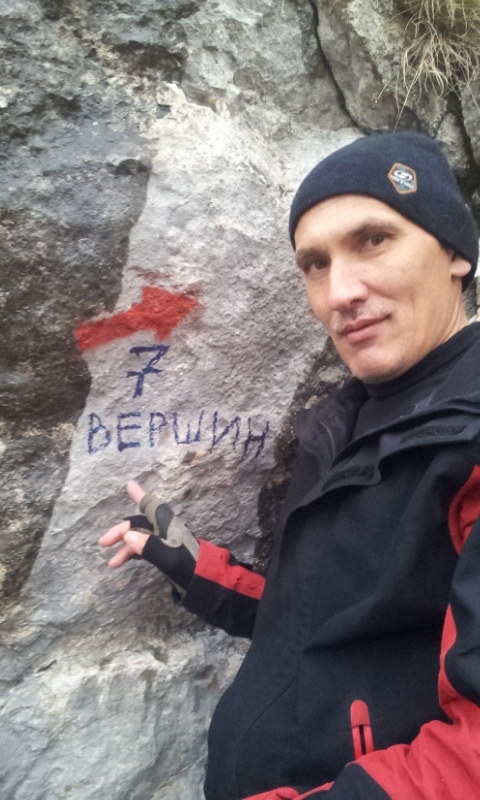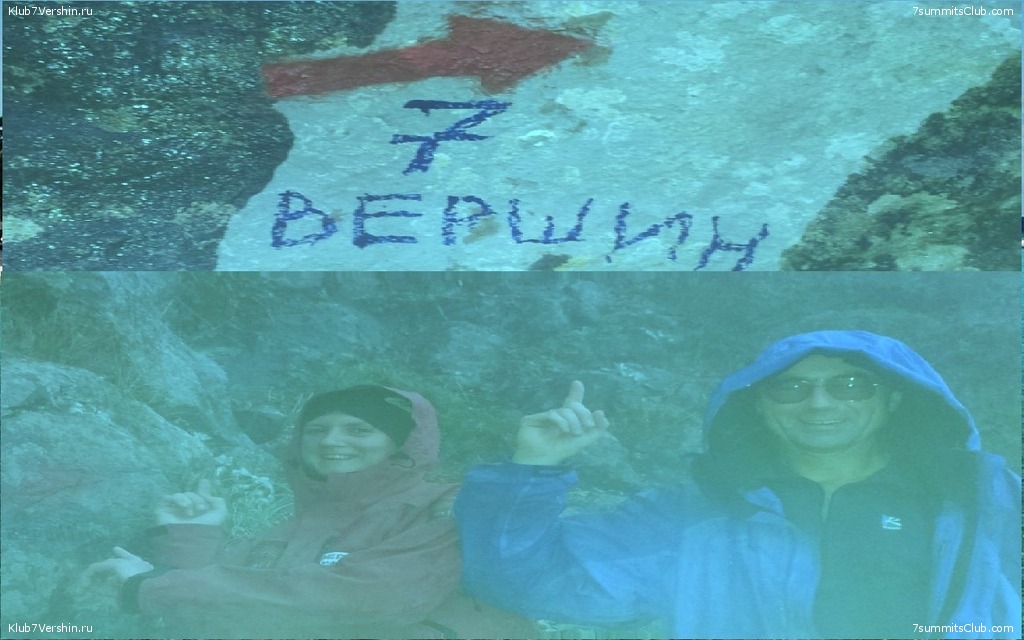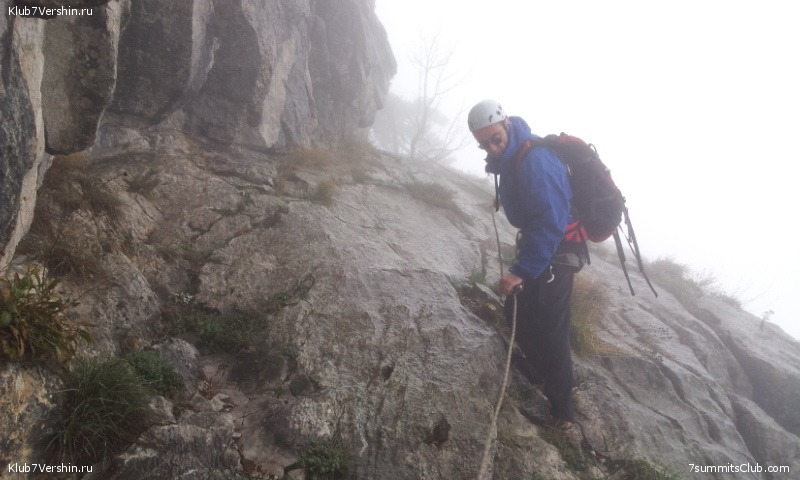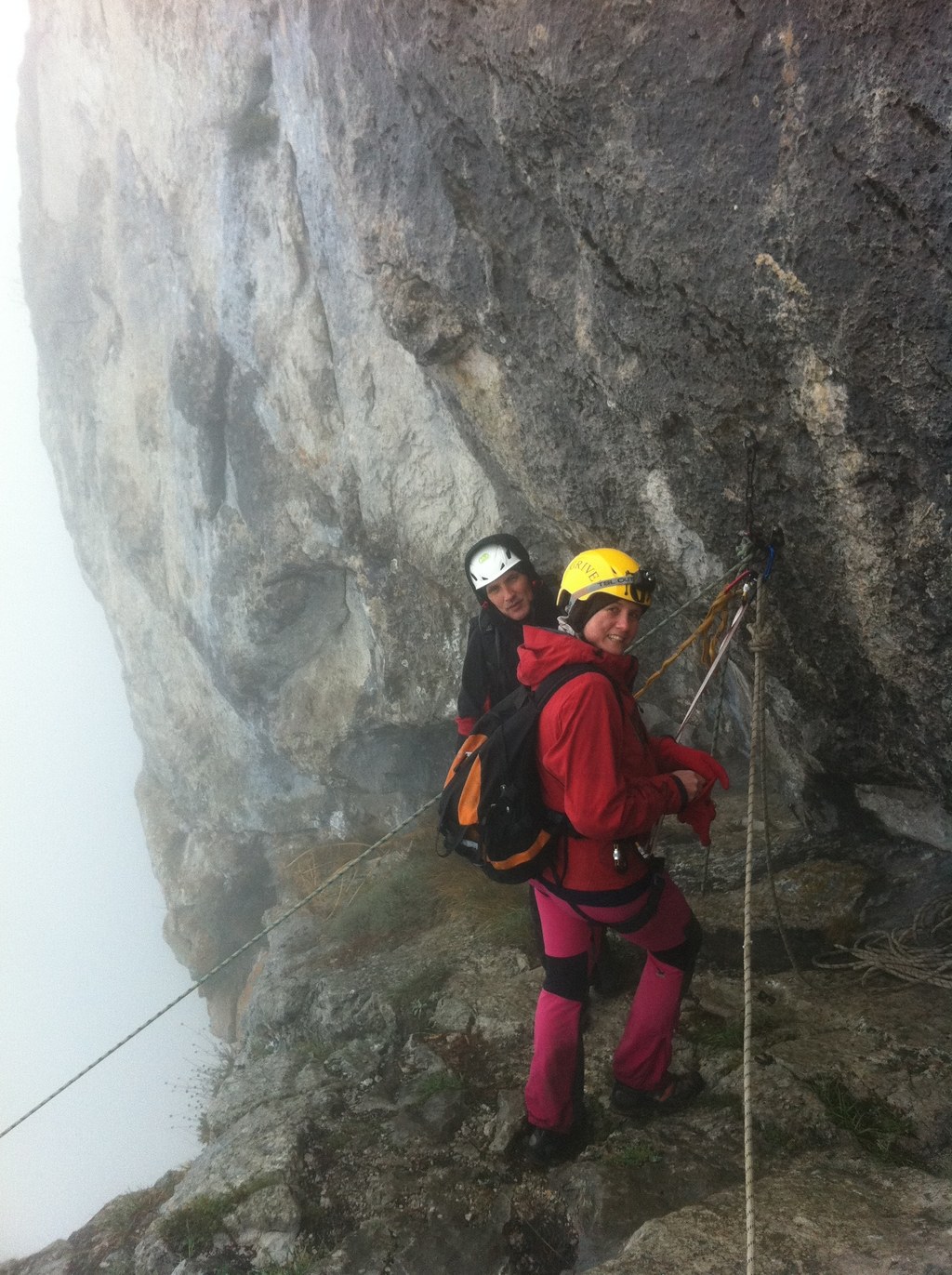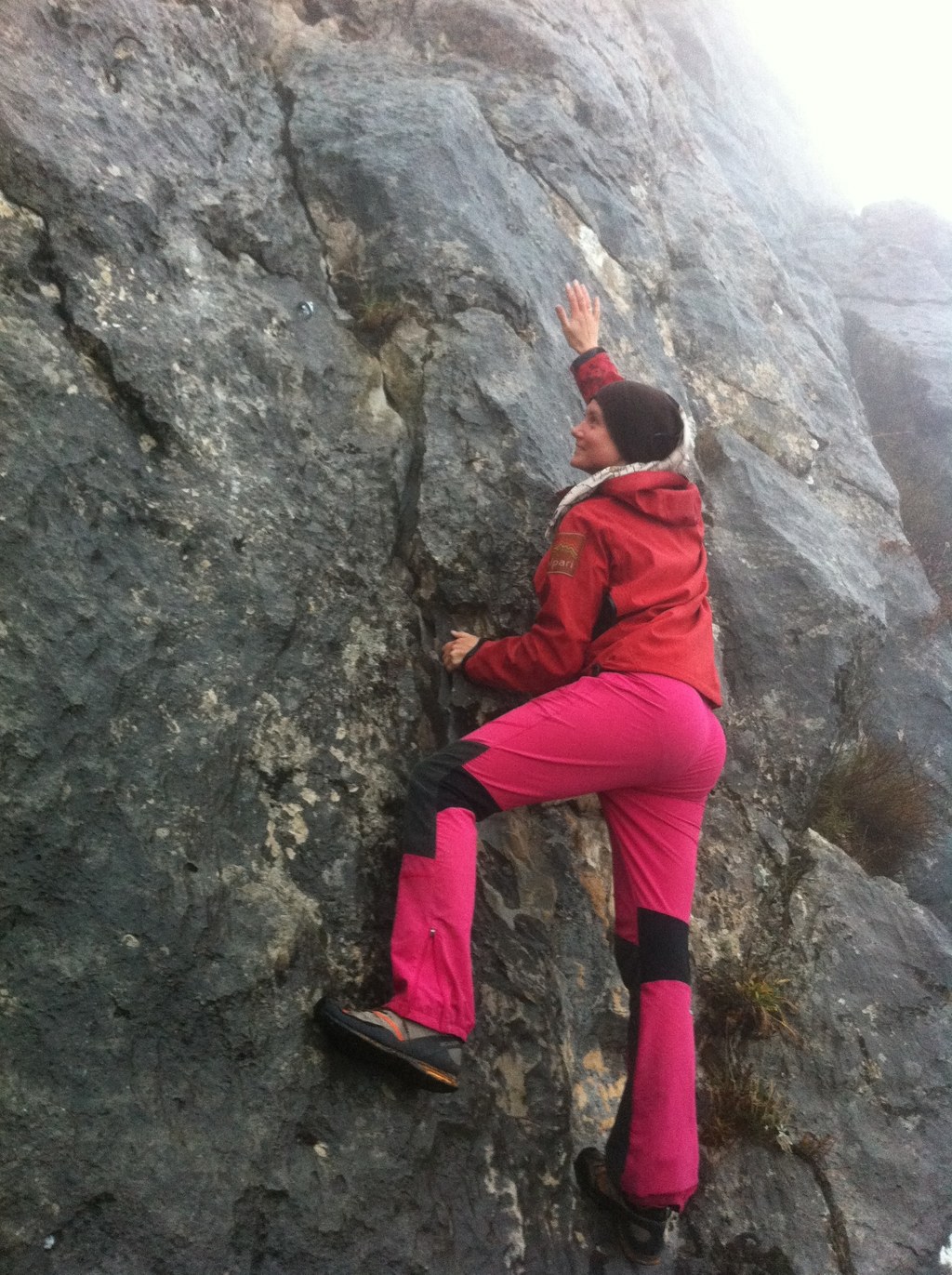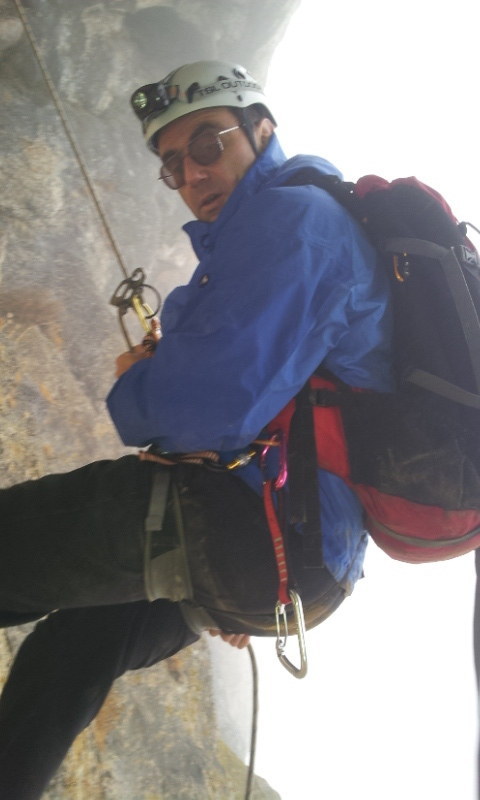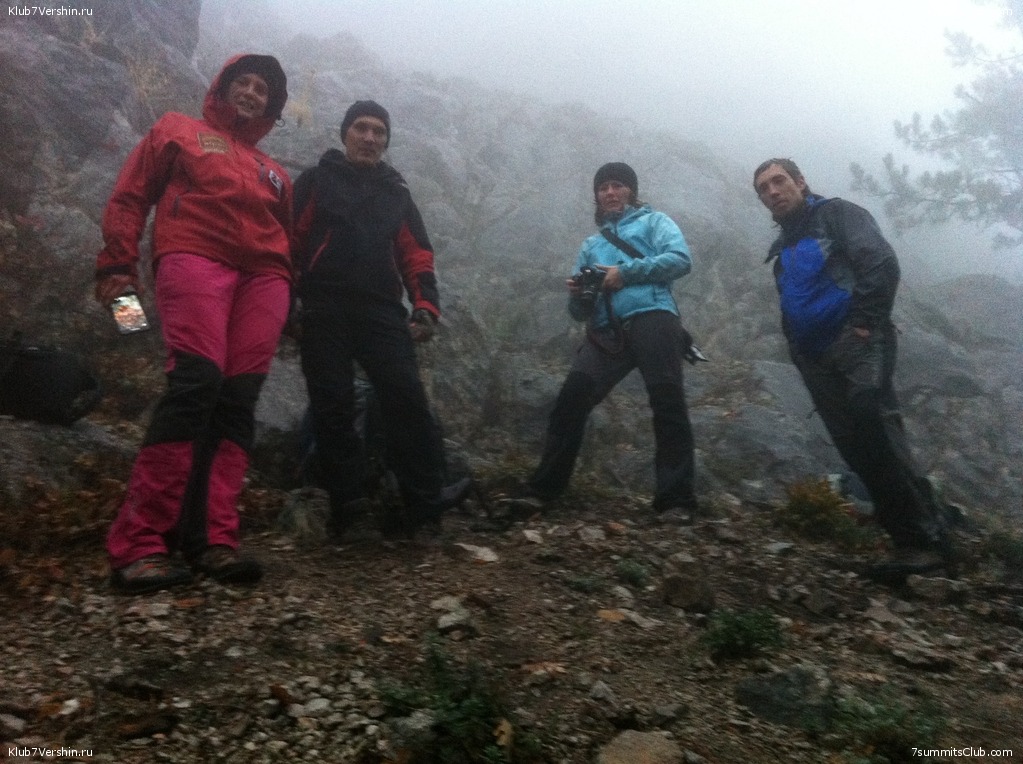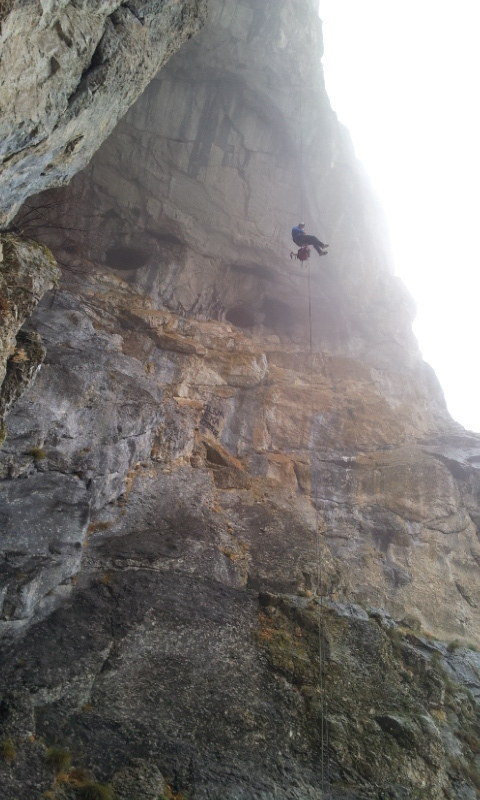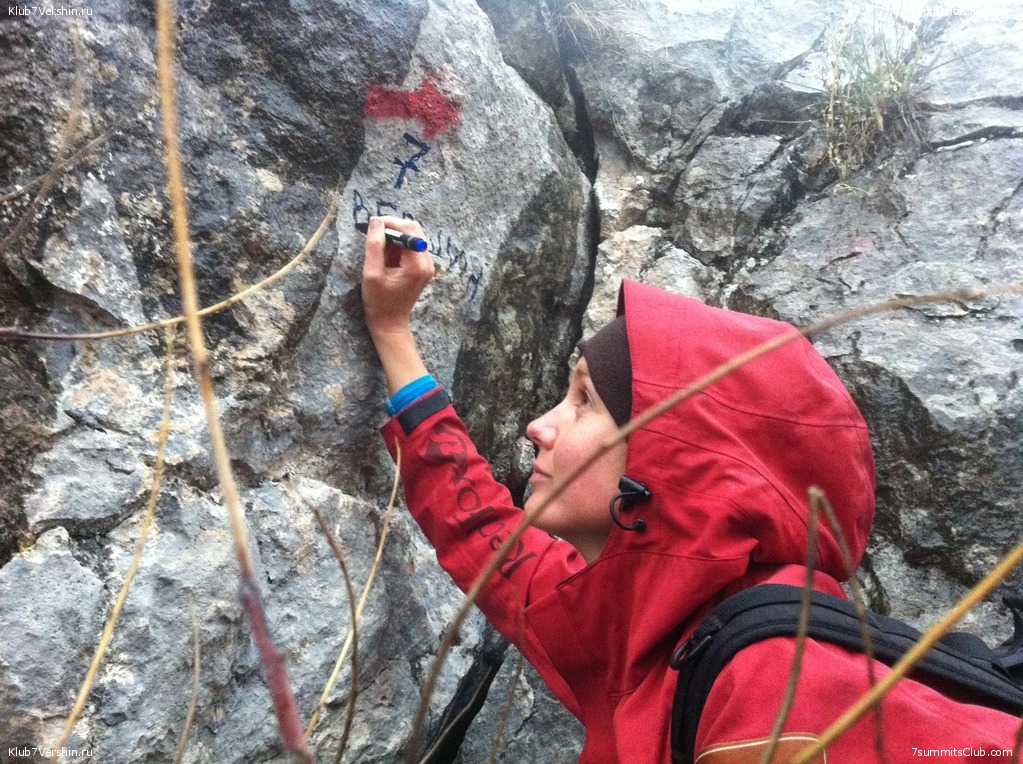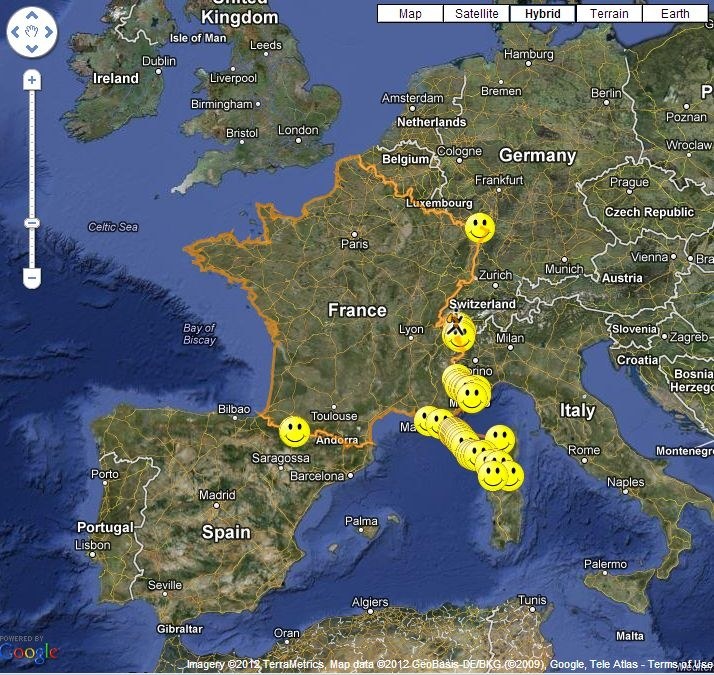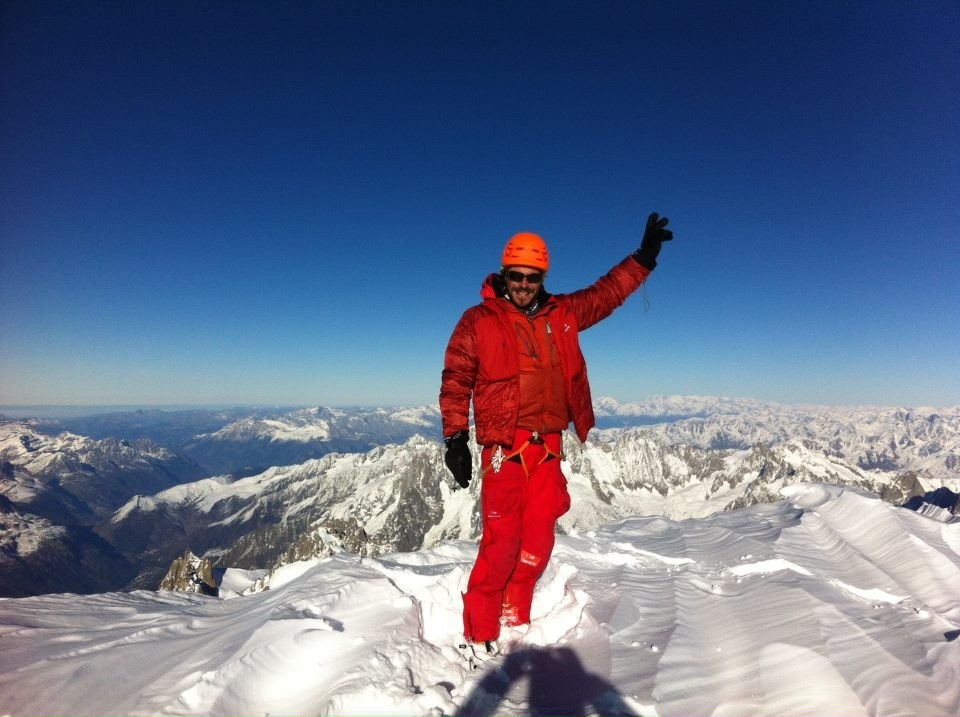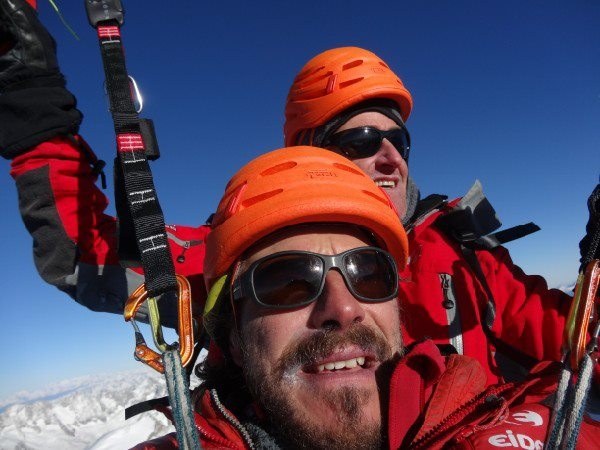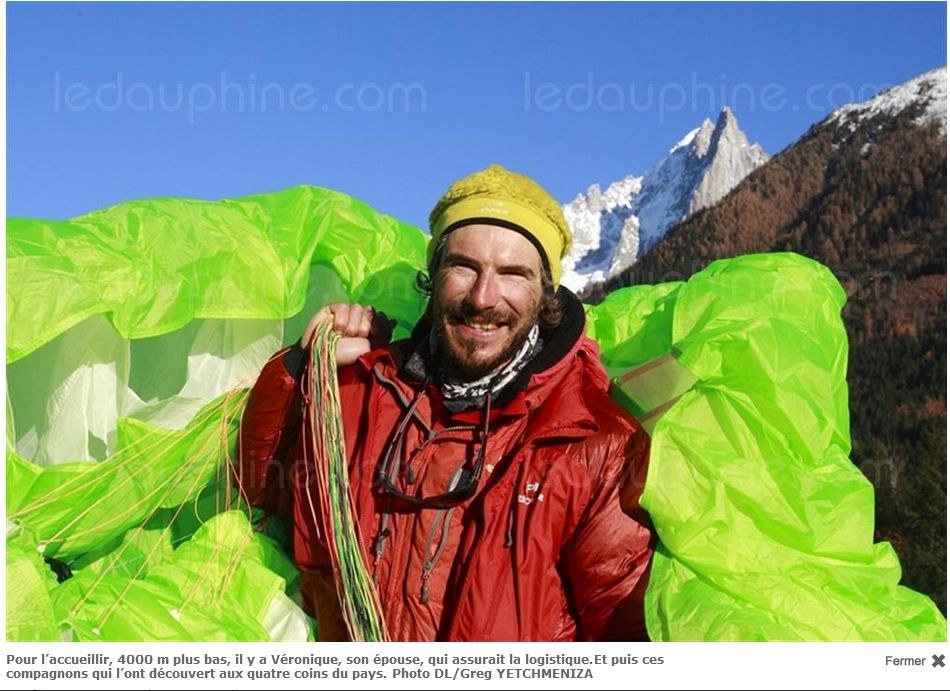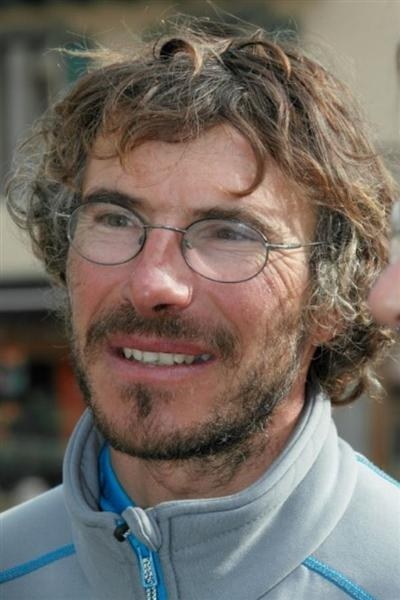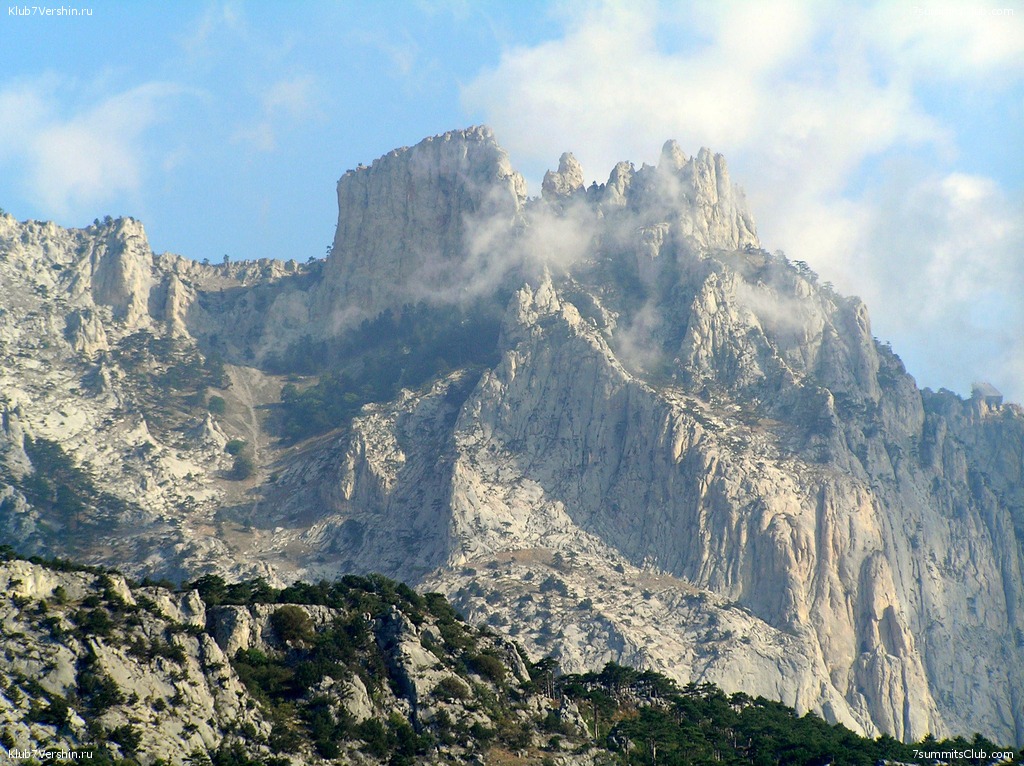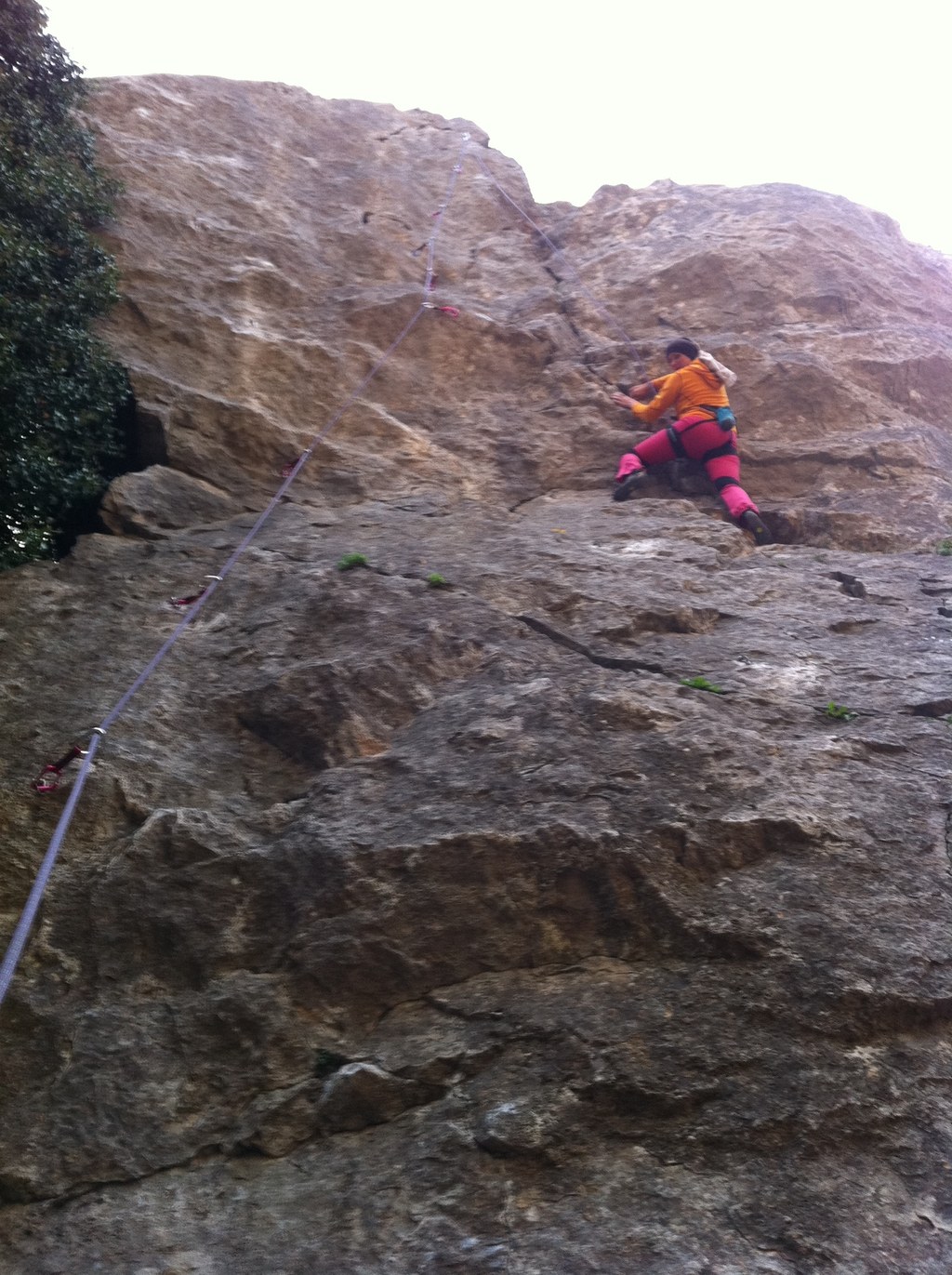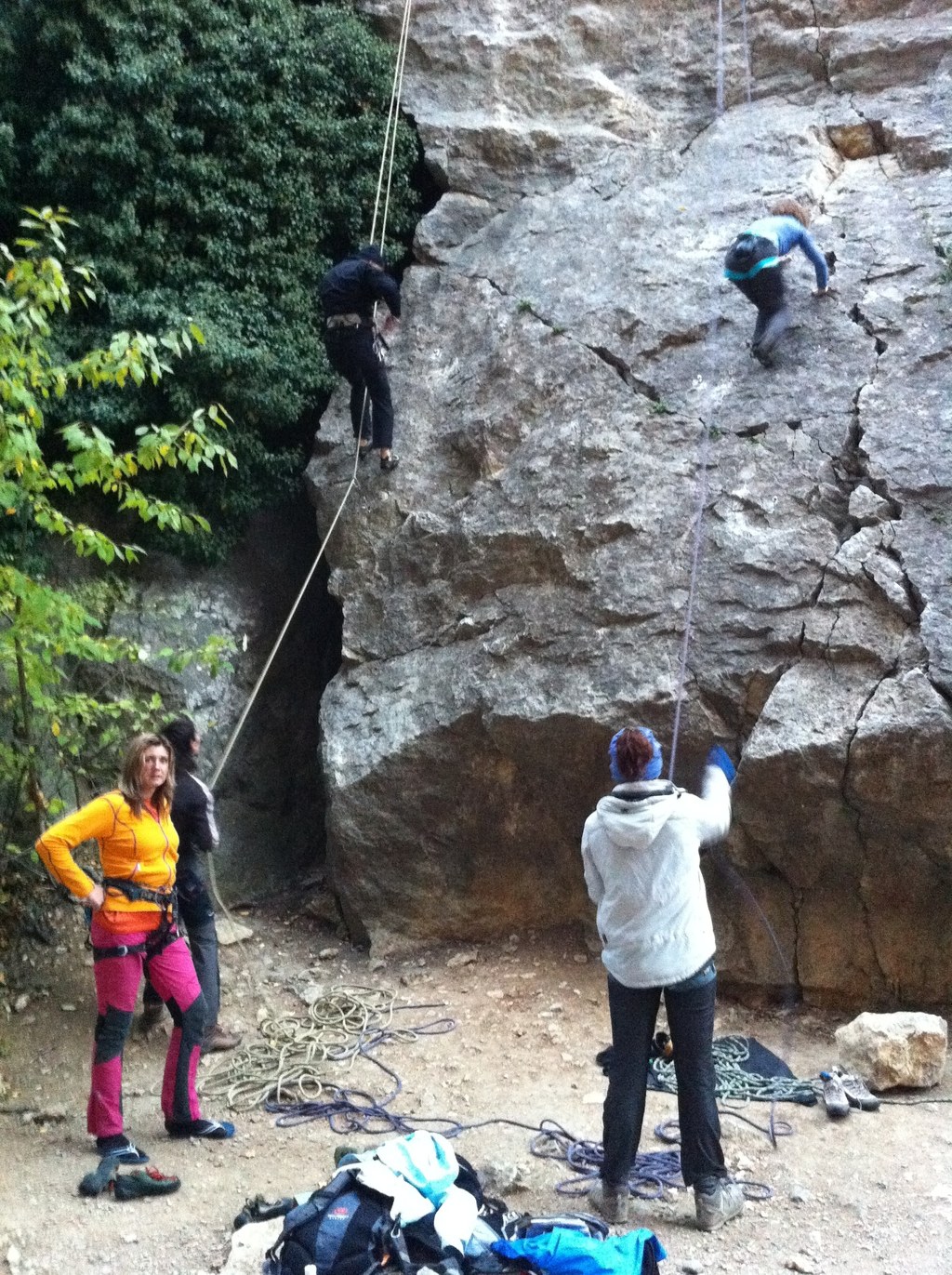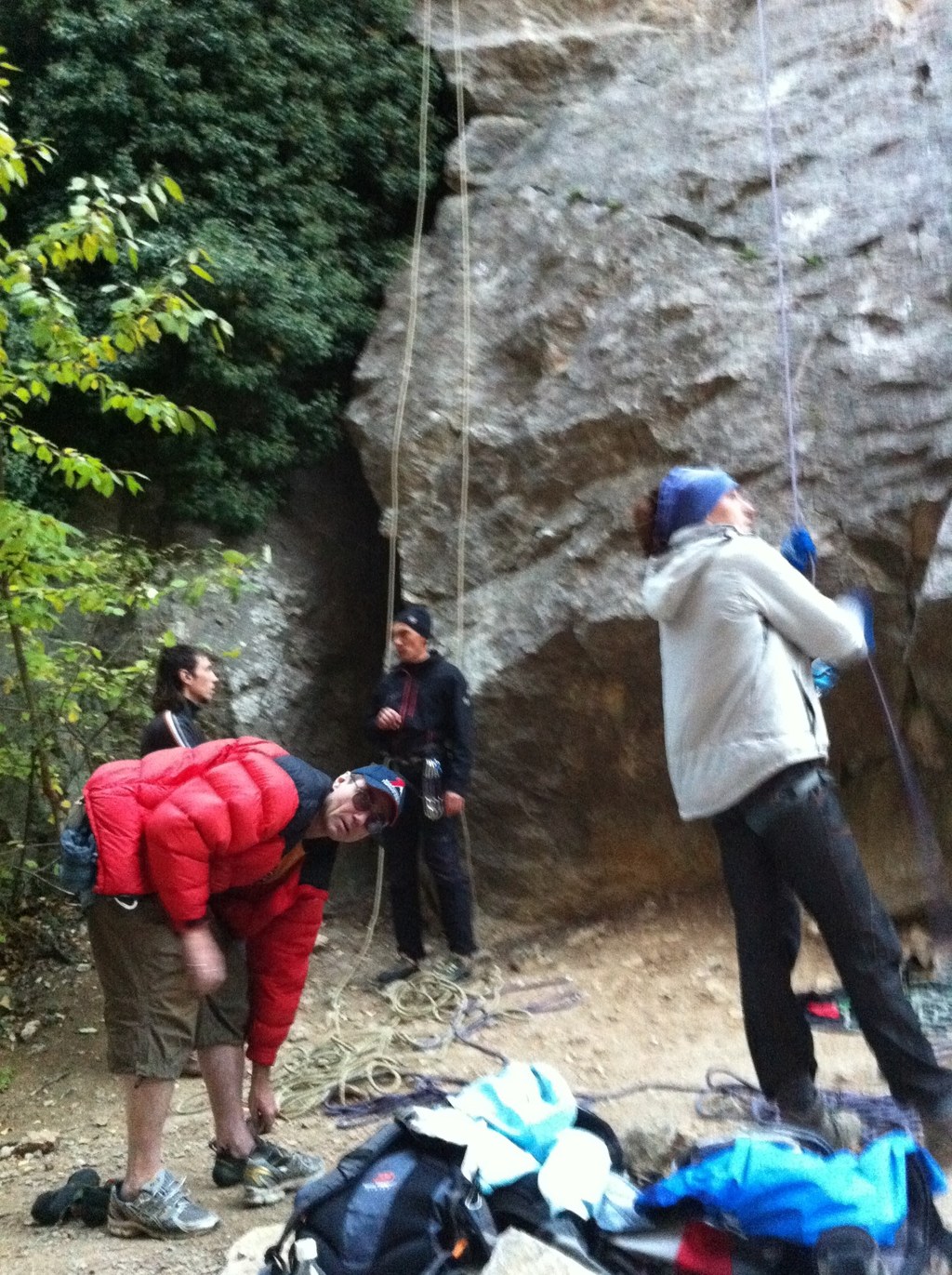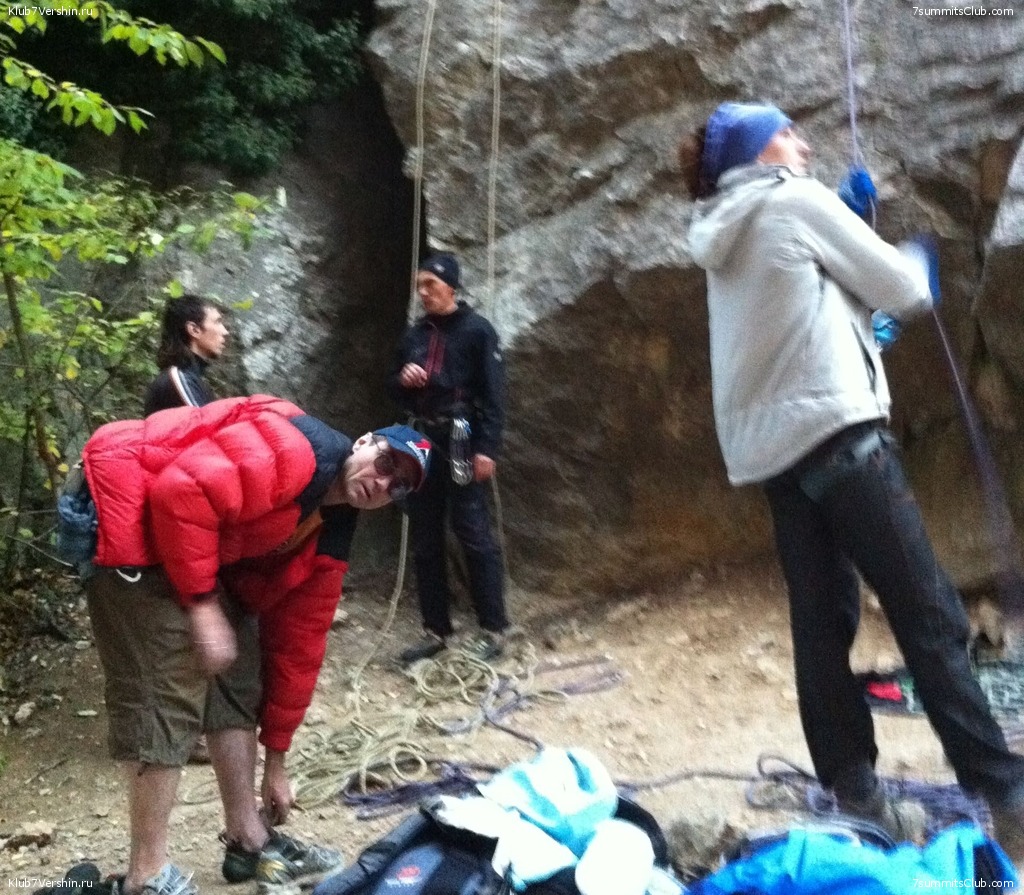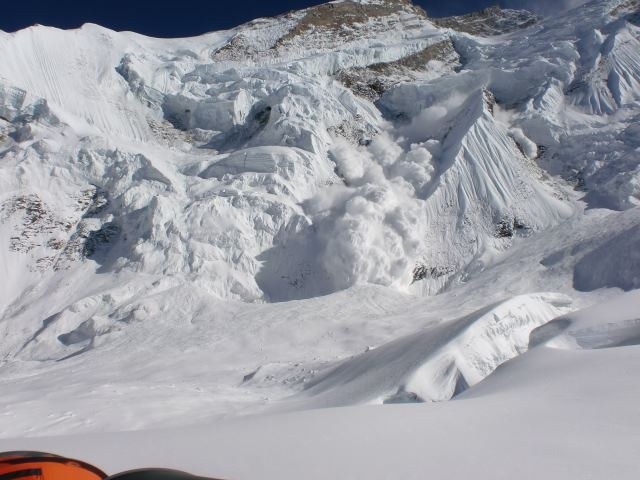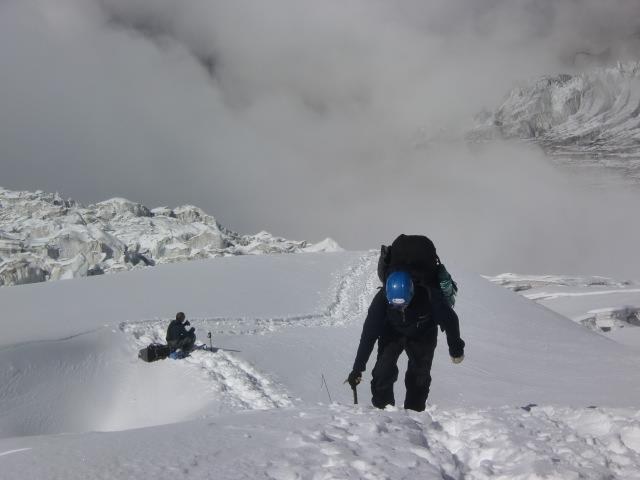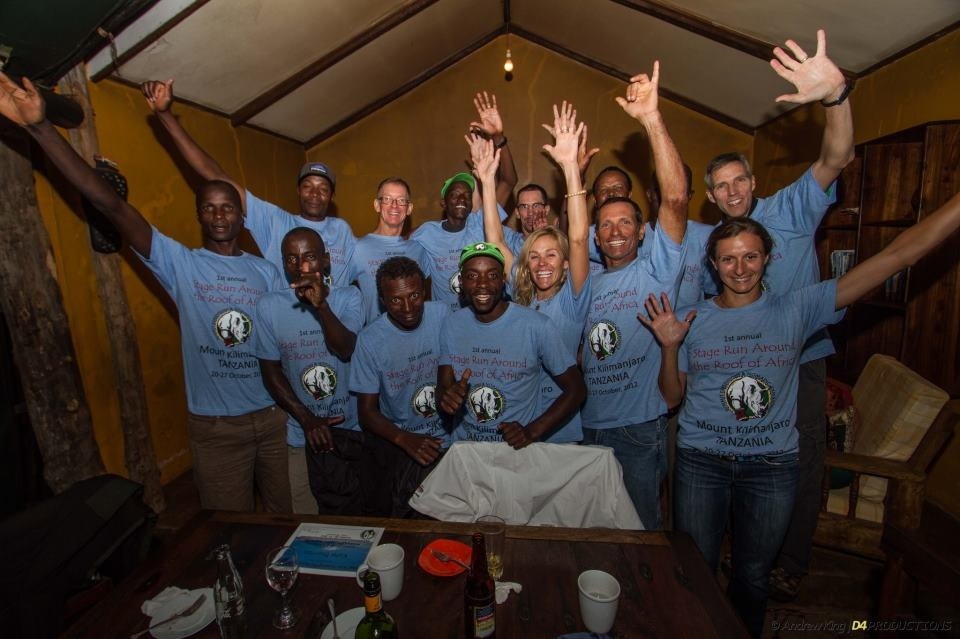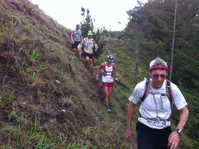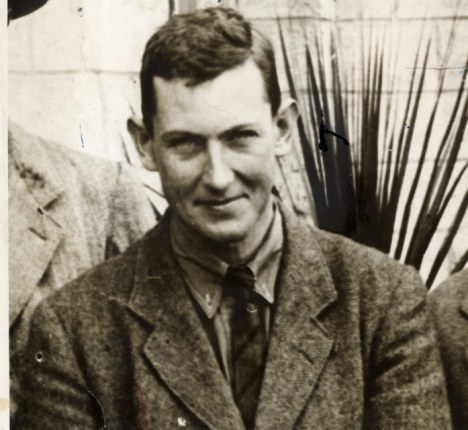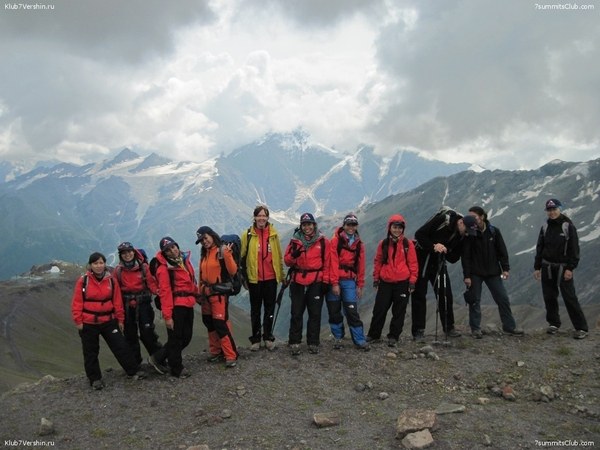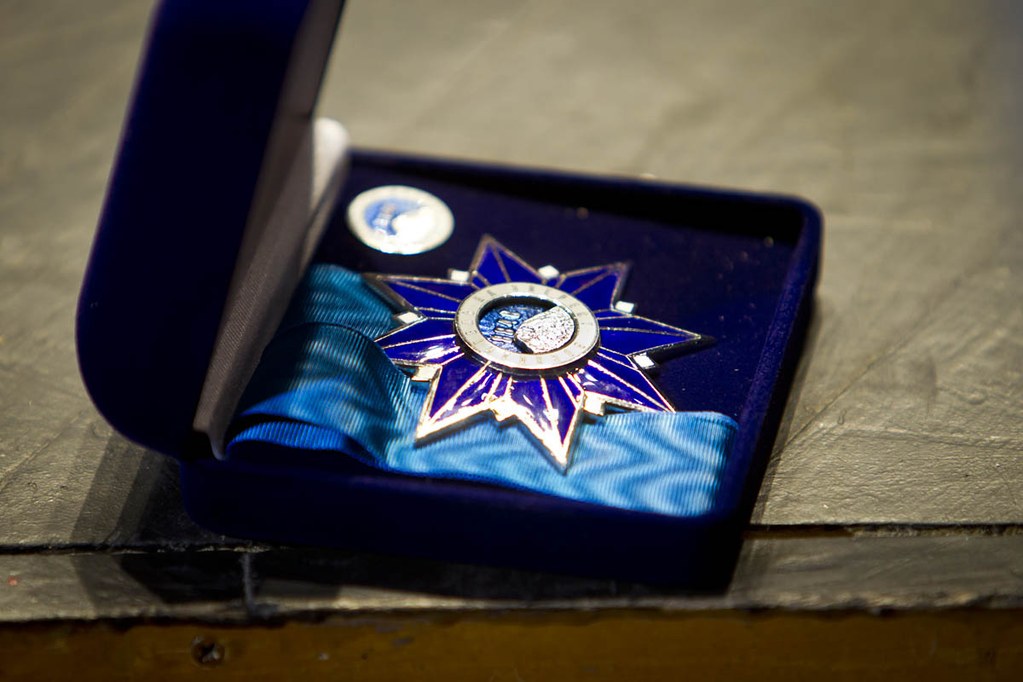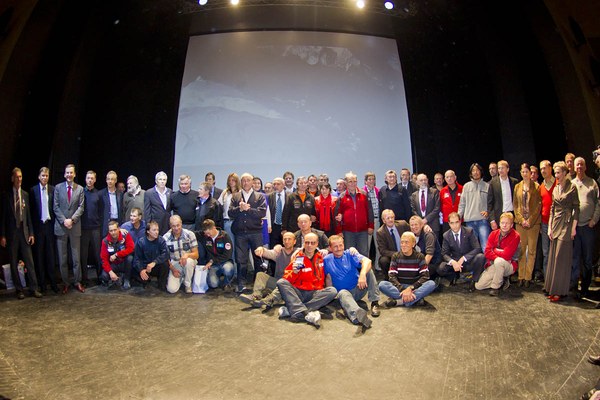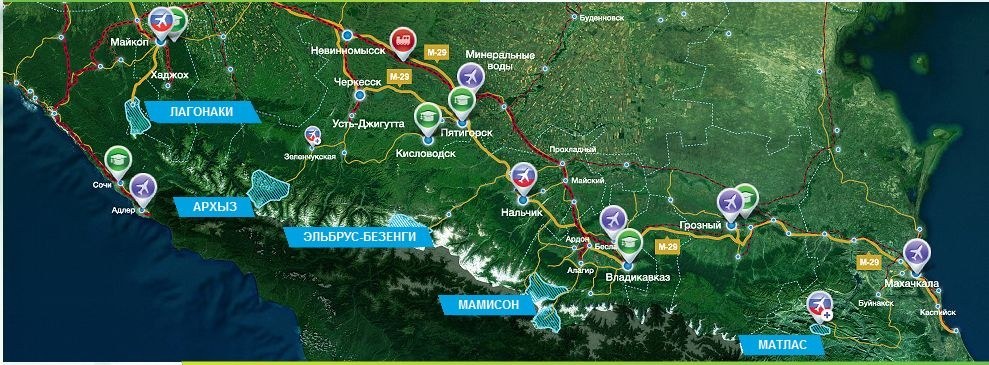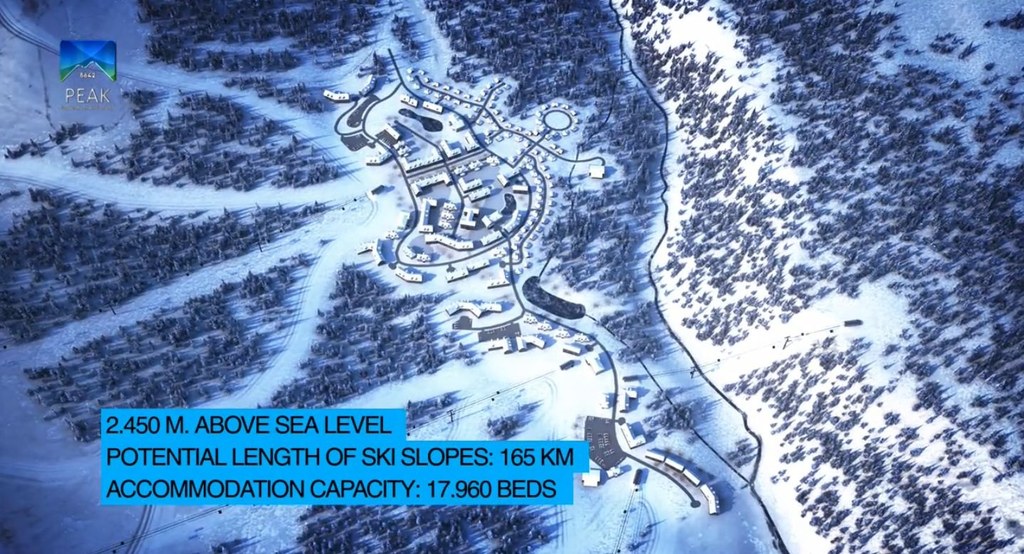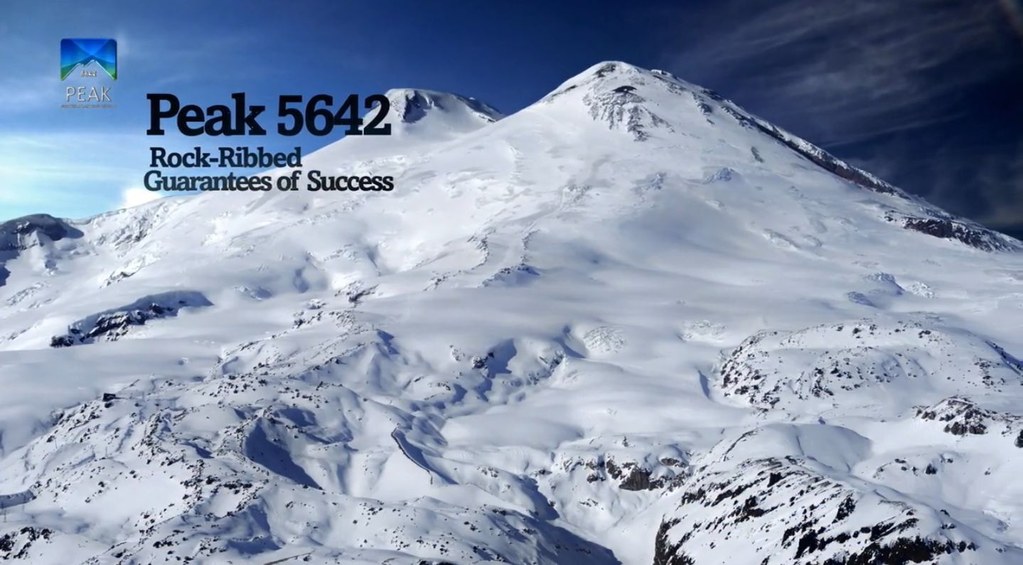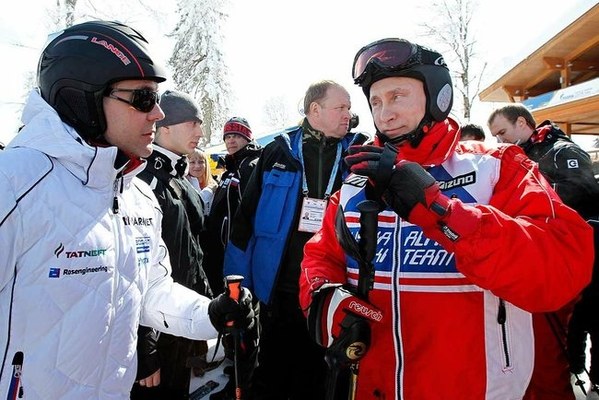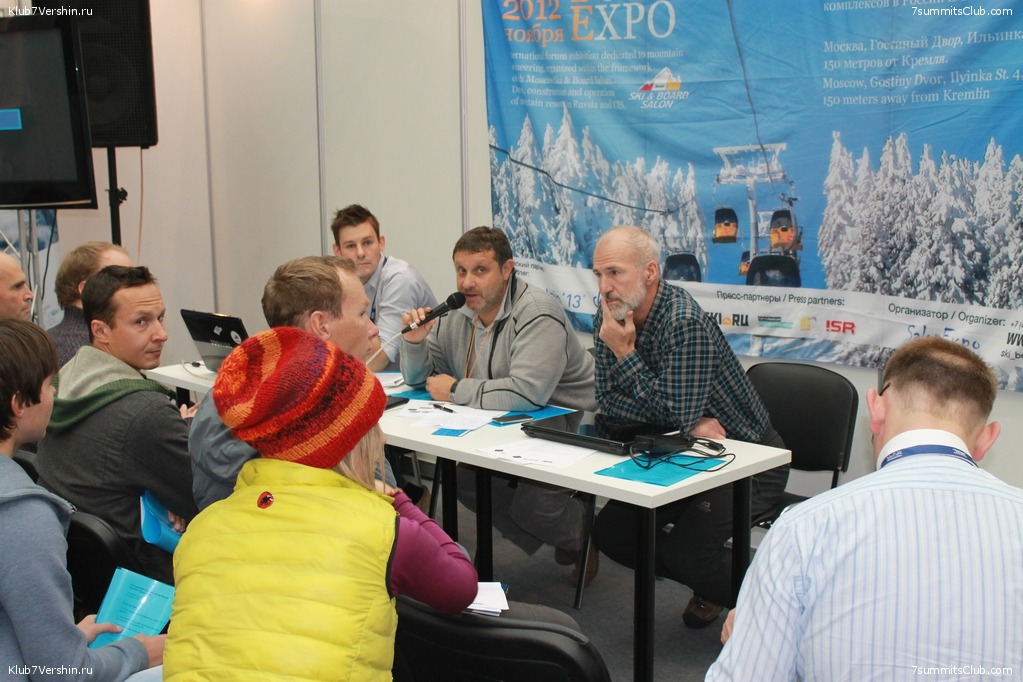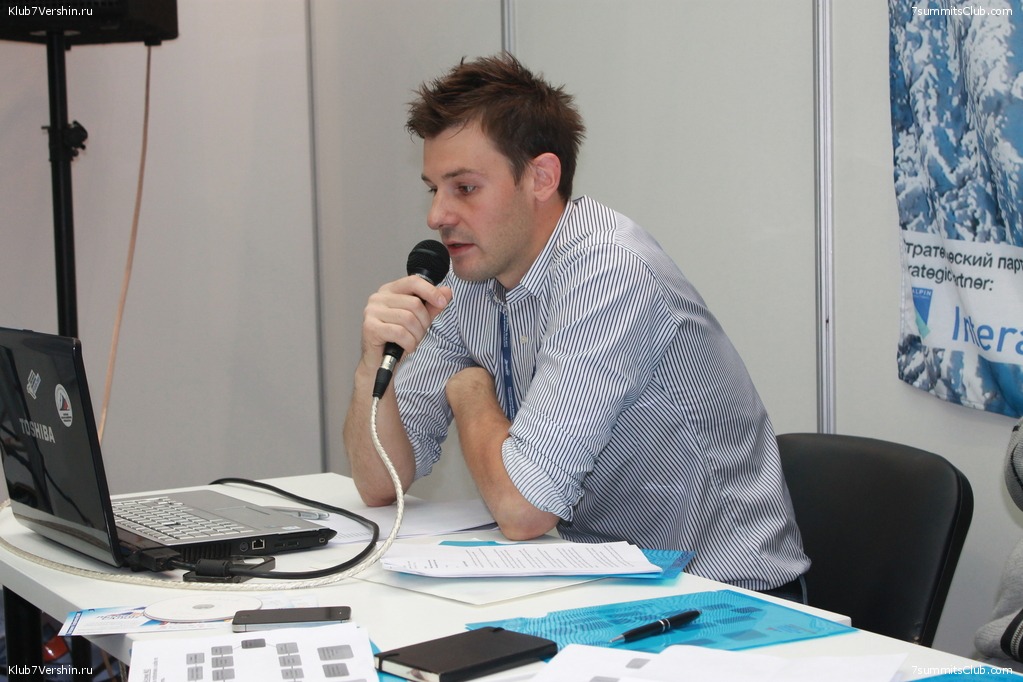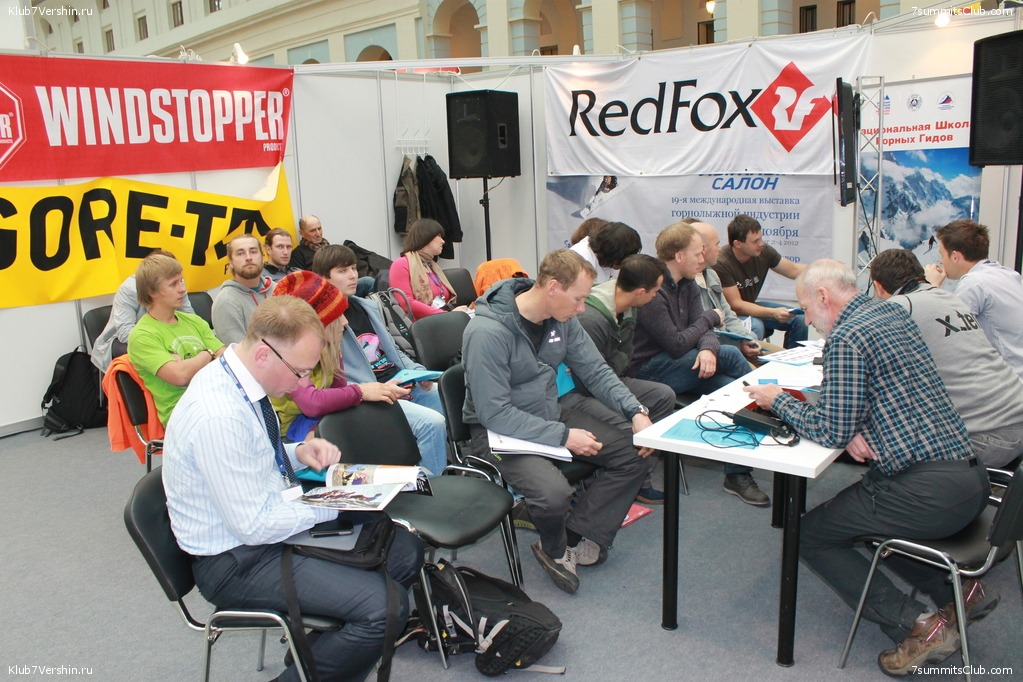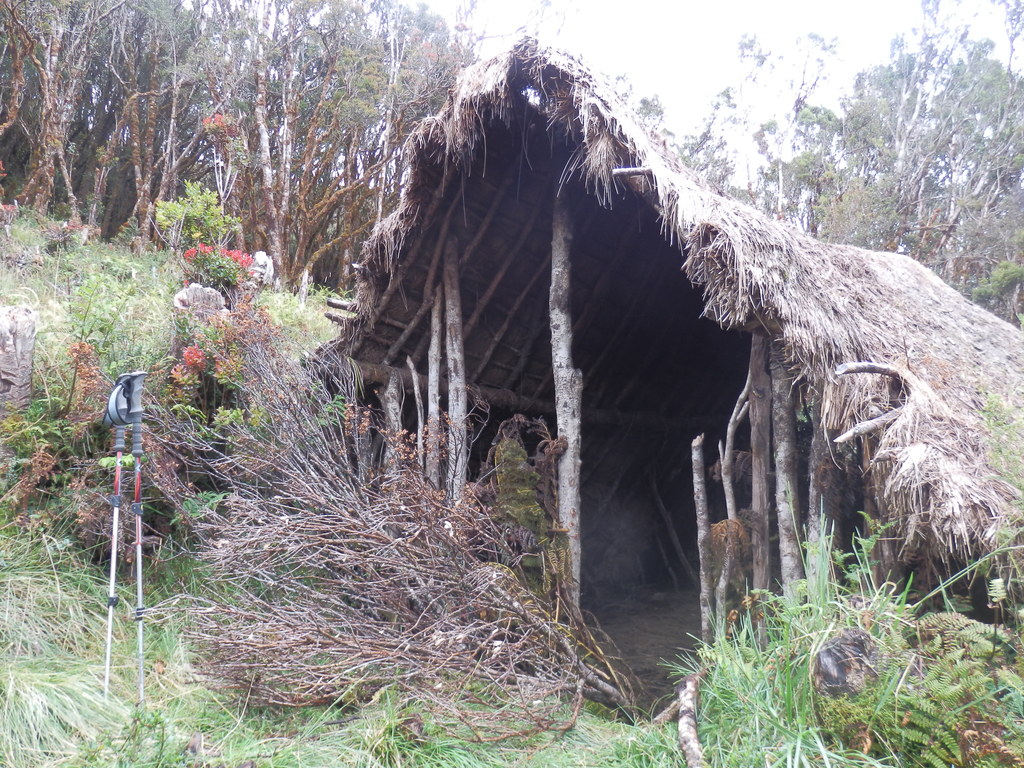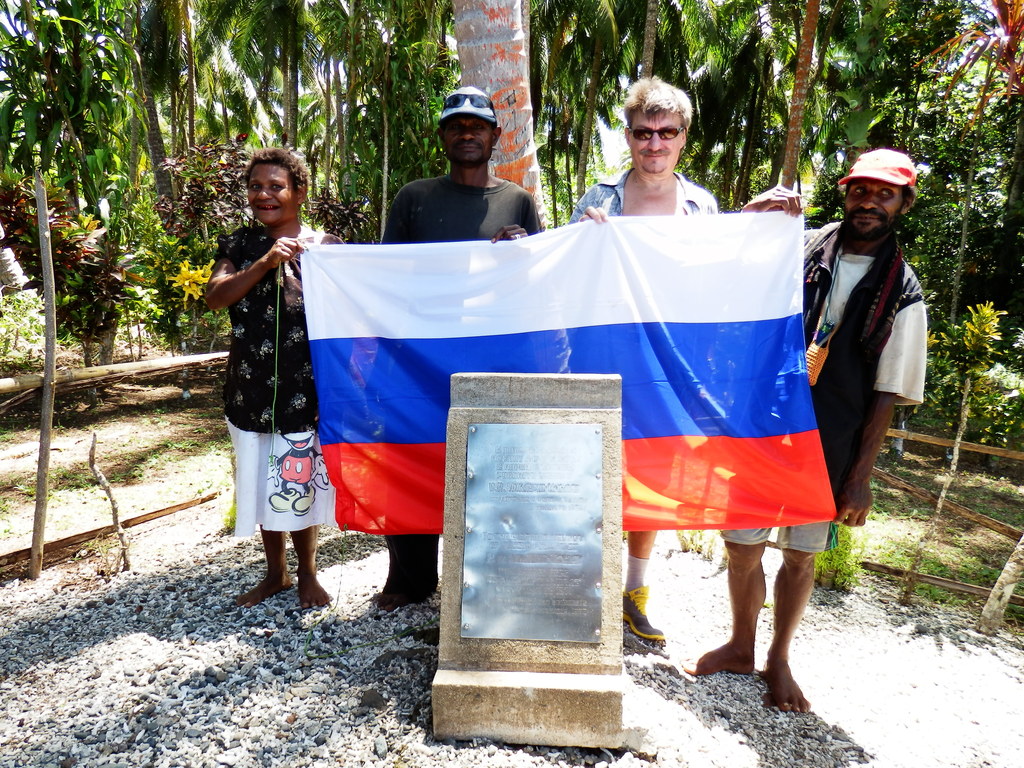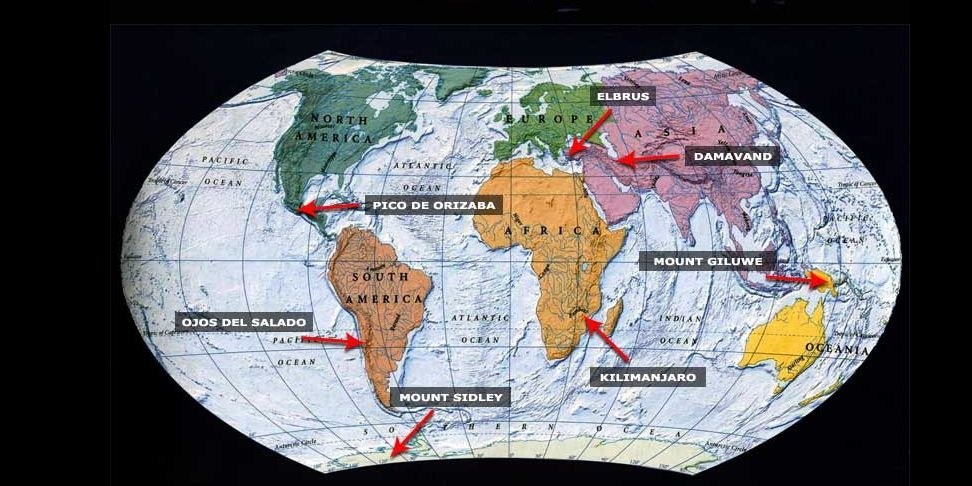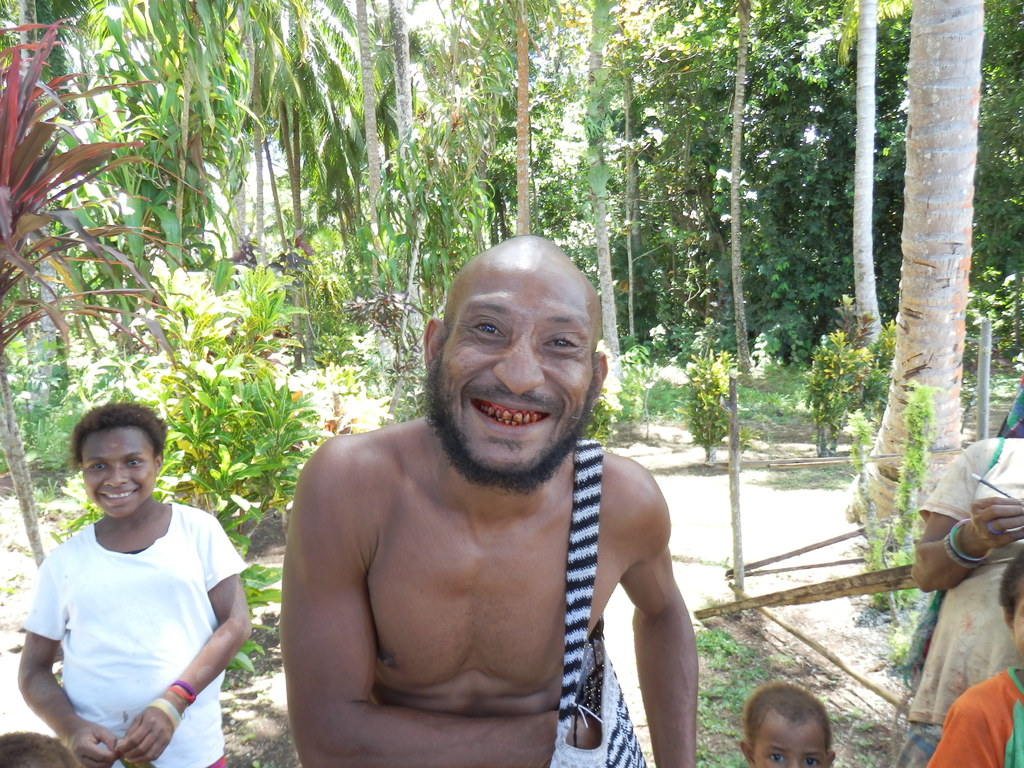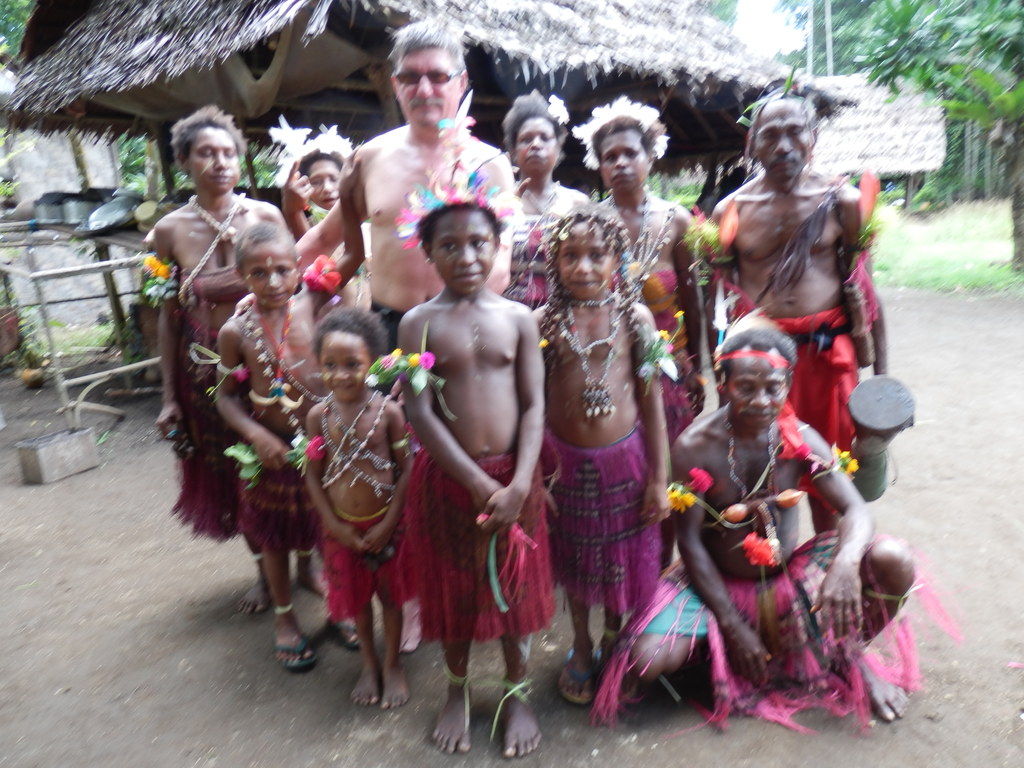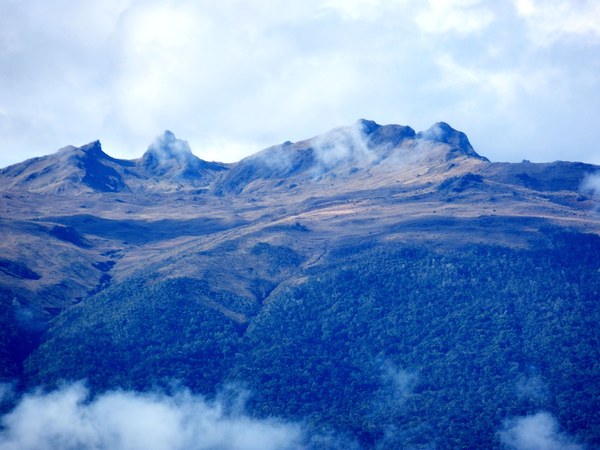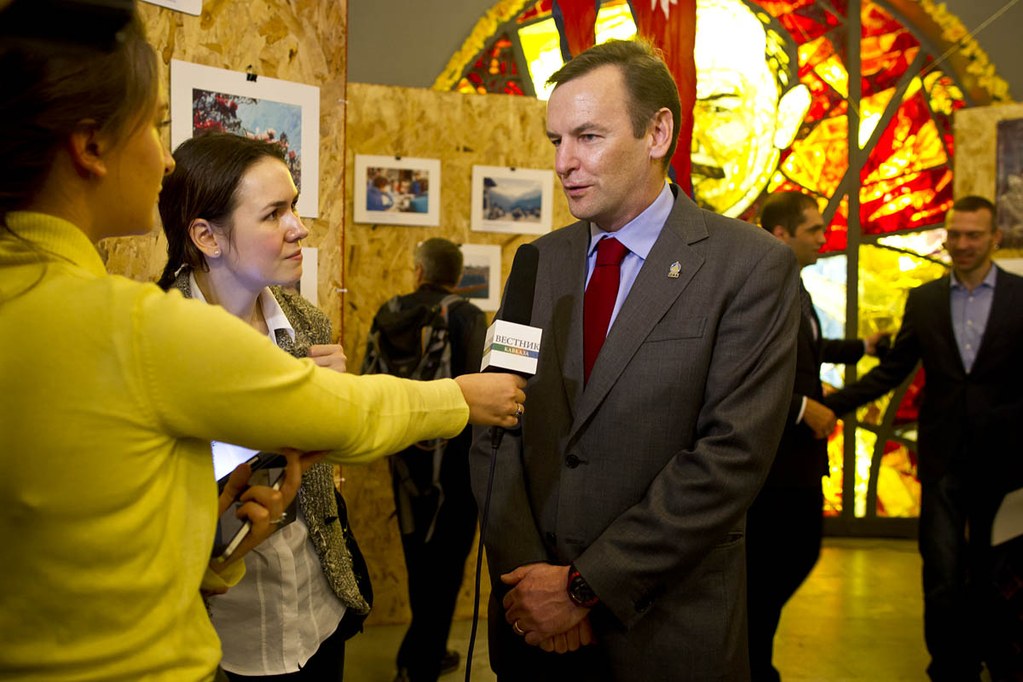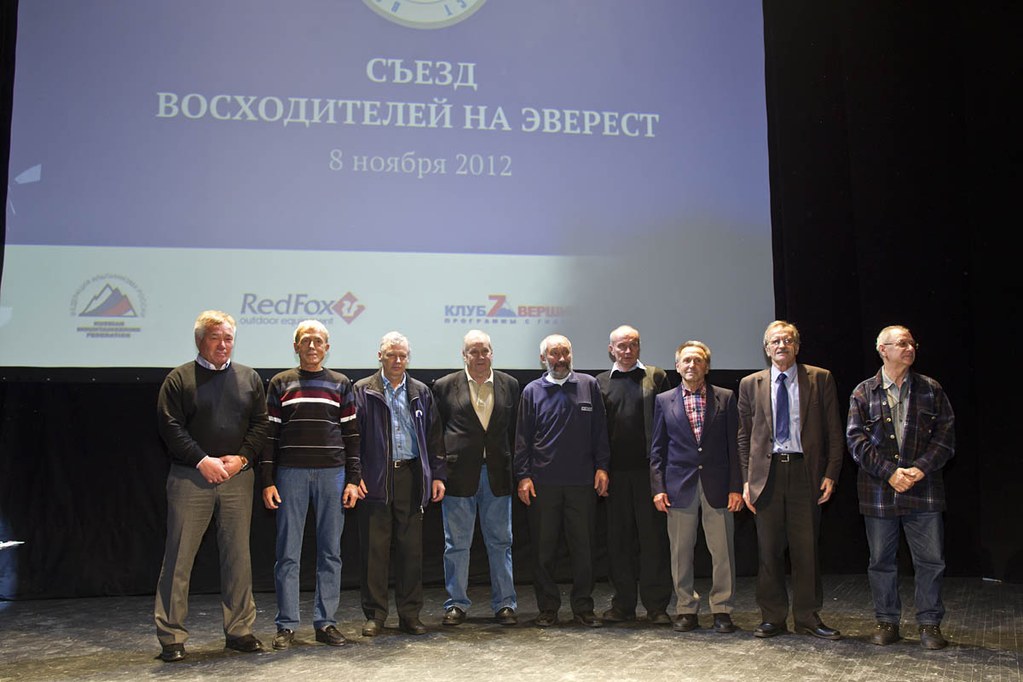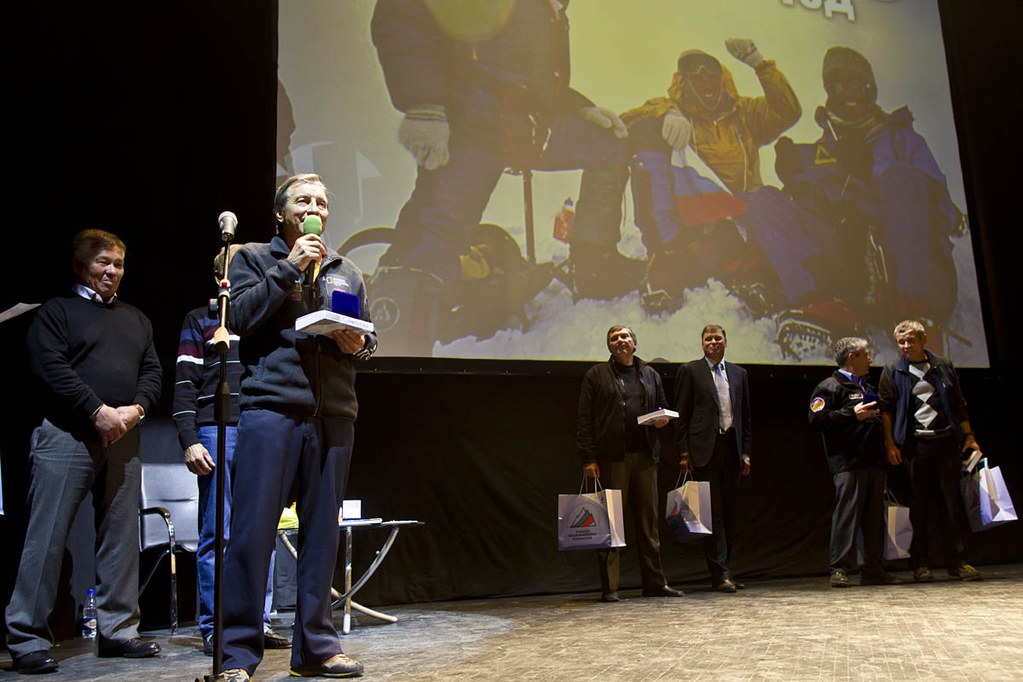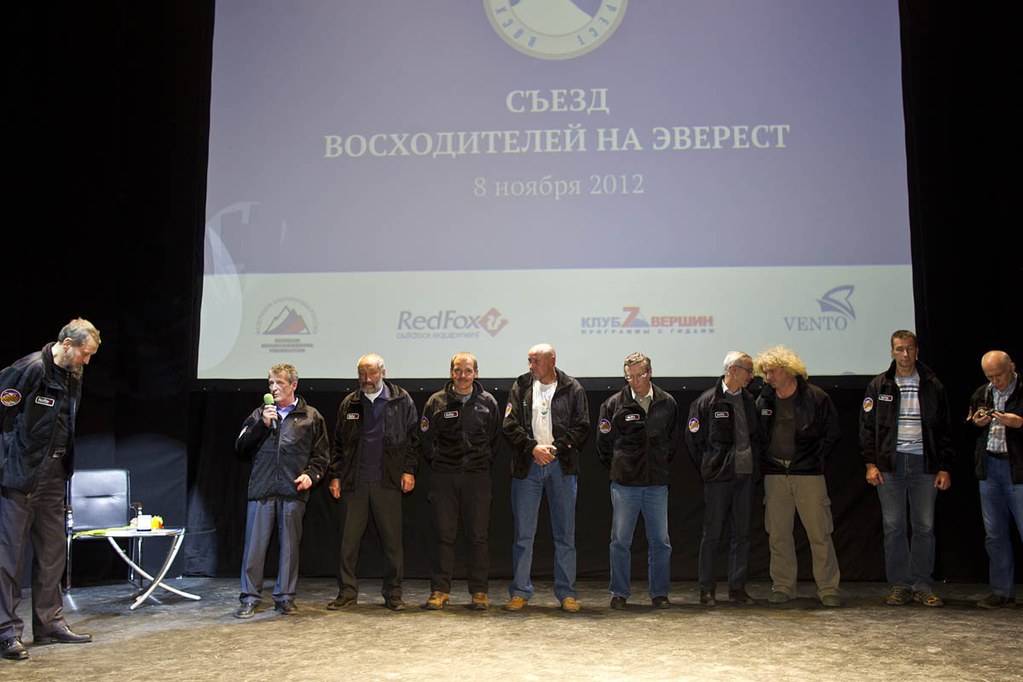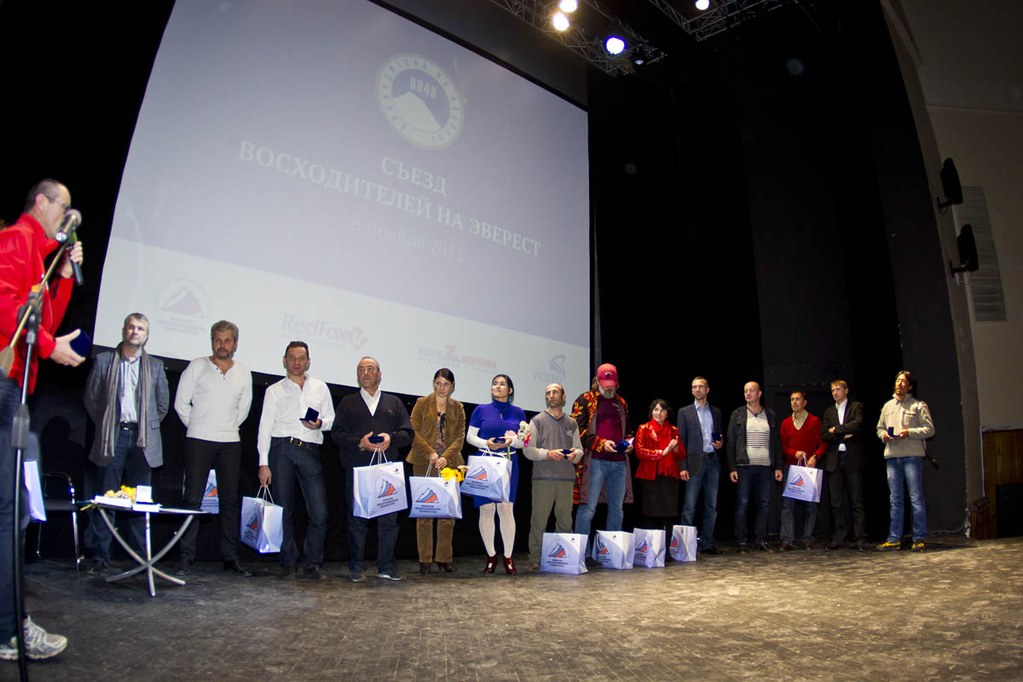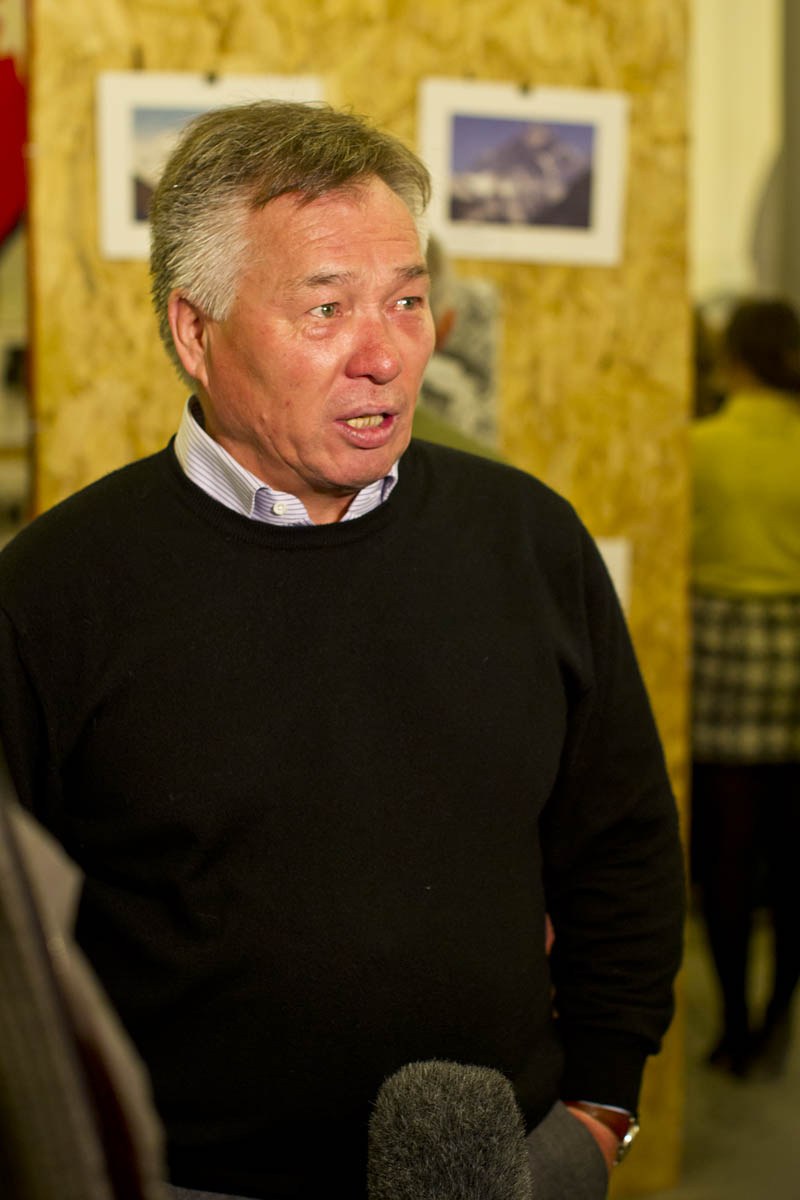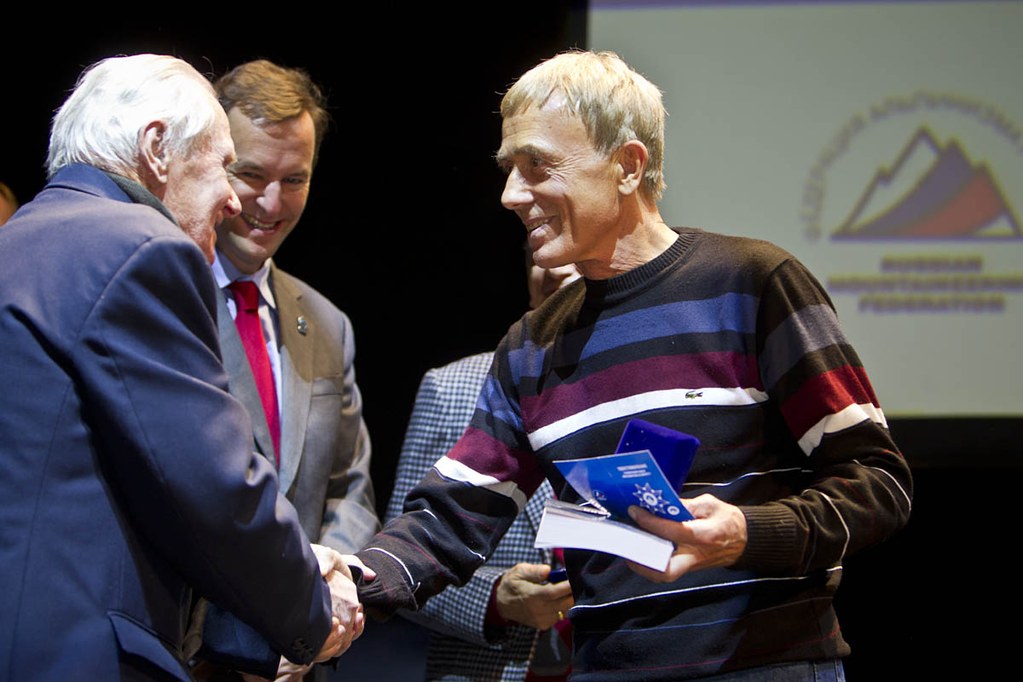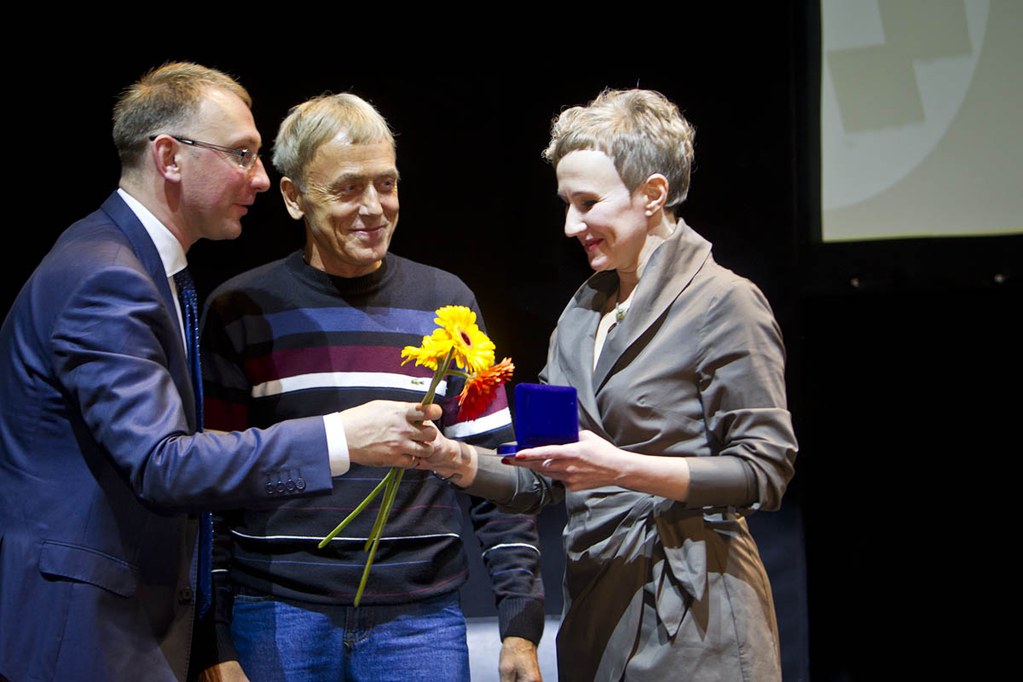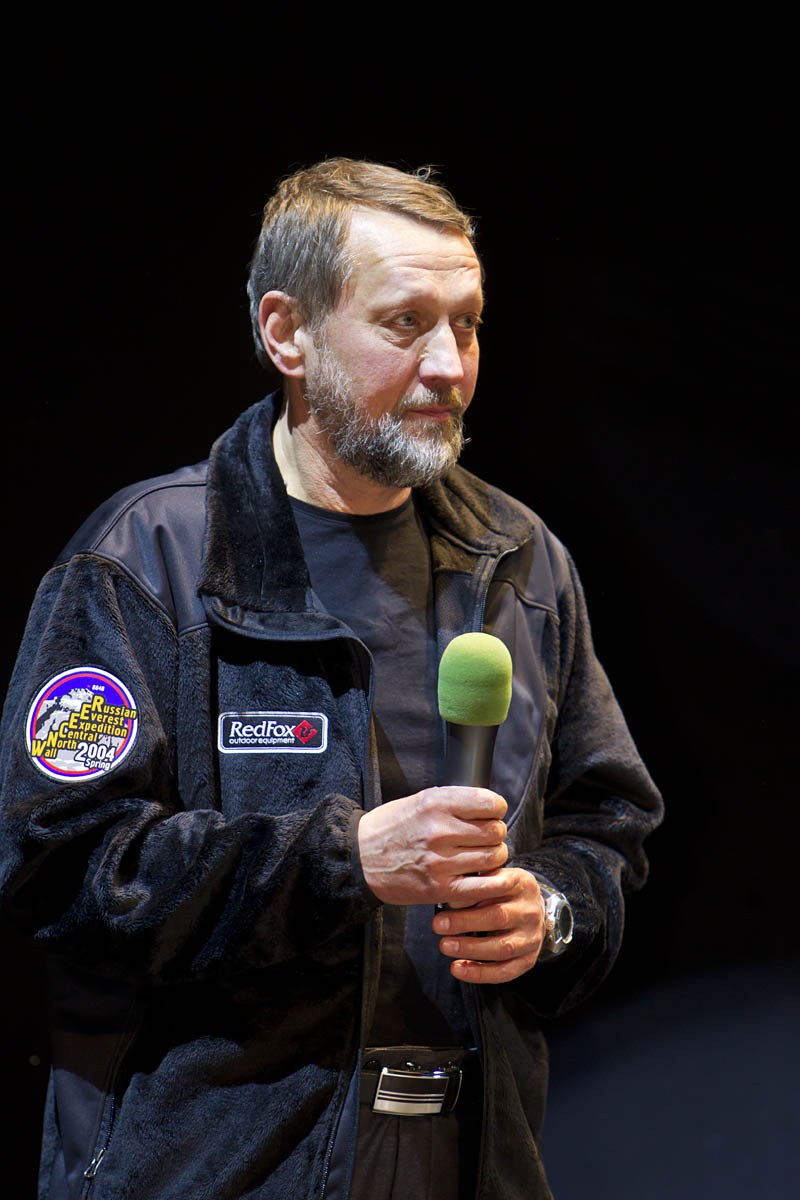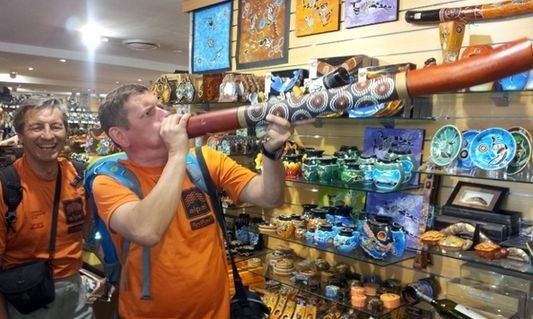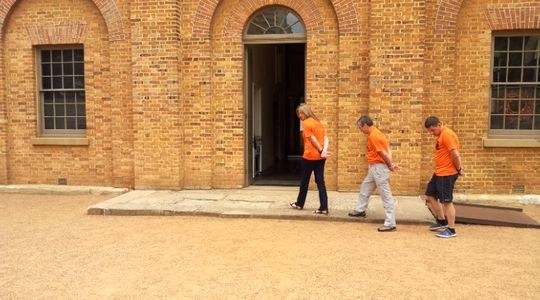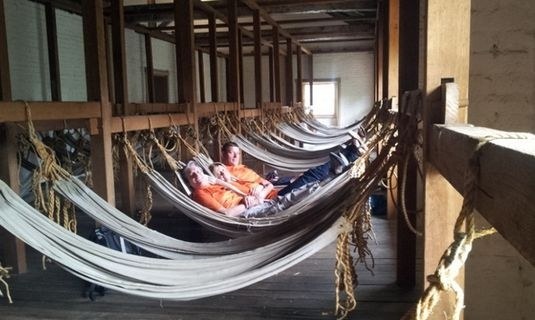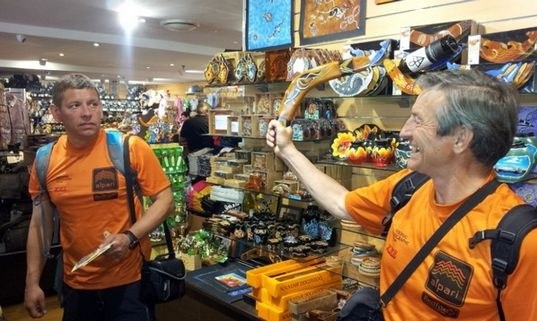All news: November 2012
Lyudmila Korobeshko with good wishes with the first day of summer!
Vinson.
Team Captain of "Alpari on top of the world" is now in the southernmost city in the world -Punta Arenas. Here it is the first day of summer. Summer in the south of Patagonia is cool, but all here blooms and green . Lyudmila prepares to meet ...
Team Captain of "Alpari on top of the world" is now in the southernmost city in the world -Punta Arenas. Here it is the first day of summer. Summer in the south of Patagonia is cool, but all here blooms and green . Lyudmila prepares to meet his friends, teammates Ivan Dusharin and Maxim Shakirov, which today fly out of Moscow. The final stage of the epic "7 summits in 300 days" begins, the goal - Antarctica and Mount Vinson....
Valeró Putrin (1940 – 2012). Obituary
Valery Putrin, the former president of the Mountaineering Federation of Russia, died suddenly on the morning of 29th of November. He went out in the morning to clean snow from the car and fell. Instant death. In the XXI century, Valery ...
Valery Putrin, the former president of the Mountaineering Federation of Russia, died suddenly on the morning of 29th of November. He went out in the morning to clean snow from the car and fell. Instant death. In the XXI century, Valery became a collector peaks climbing Mont Blanc, Kosciuszko, Mount Fuji, Aconcagua, Kilimanjaro. In 2010, at age 70, he tried to climb on Mount McKinley. Due to the illness of Comrade their assault failed. By all signs, Valery was in good shape and there were no signs of such end.
Putrin Valery (1940 r.) - A graduate of the Minsk Radio Engineering Institute (1964), studied science, has three certificates on inventions (1976, 1977). Master of sports of cycling and mountaineering (1970). He has participated in the national championship on mountaineering (1968, 1970, 1971, 1974, 1979), was the trainer of the international mountaineering camps in 1976, 1978, 1979, 1980, 1983 and 1984. Until the last days Putrin worked as chief specialist at the Research Institute of Radio.
In 1987 Putrin was a leader of expedition of USSR national team, that made the first winter climb on the peak of Communism. In 1991, he was the head of the first Russian Himalayan expedition, which opened a new route to the summit of Cho Oyu (8201 m).
Photos from Mt. McKinley expedition
On Kilimanjaro
Kazakhstan team - world champions in high-altitude mountaineering 2012
Lenin Peak.
November, 24 Eurasian Association of Mountaineering and Climbing (EAMA) appointed the first in history champion of the world in high-altitude mountaineering class. The judiciary brigade consisted of authoritative climbers ofUSSR: E.Ilinsky ...
November, 24 Eurasian Association of Mountaineering and Climbing (EAMA) appointed the first in history champion of the world in high-altitude mountaineering class. The judiciary brigade consisted of authoritative climbers ofUSSR: E.Ilinsky (Kazakhstan) - Chief Justice, A.Shabanov (Uzbekistan),
V.Shataev (EAMA), V.Yatsko (Ukraine), A.Horoshih (Russia), D.Grekov (Kyrgyzstan), K.Valiev, D.Muravev, B.Studenin, A.Timofeev (Kazakhstan), A.Skopin (Kazakhstan- Chief Secretary).
Competition is open to everyone, from all over the world. World title is quite official, but not all-world recognized yet.
Eurasian Association of Mountaineering and Climbing was founded in 1992 as the successor to the Mountaineering Federation of theUSSR. However, its work has long been modest. In recent years, an activity of EAMA significantly increased. Finally, they managed to normalize relations with the FAR and start a new life.
High-altitude mountaineering class World Championship 2012
1st place (7.00 points) - The team of Kazakhstan Mountaineering Federation: leader and head coach Vassily Pivtsov. Partners: Ildar Gabbasov, Alexander Sofrygin. For the ascent to the summit of Khan Tengri (6995 m). via the center of the North Face, 12-20 August. 6B grade.
7 Giants for Stefan Glowacz - Project Red Bull Giants 7
Our Seven Summits Club recently opened a new route named “Seven Summits” to the top of Mount Ai-Petri in Crimea. Objects may be called 7 Summits could be found everywhere in the World. One of these objects with the name "Seven ...
Our Seven Summits Club recently opened a new route named “Seven Summits” to the top of Mount Ai-Petri in Crimea. Objects may be called 7 Summits could be found everywhere in the World. One of these objects with the name "Seven Giants" came not so long ago in the finals of "The Seven Wonders of Russia Awards." Now its can get international recognition, if a mission carried out by the great German climber Stefan Glowacz and RED BULL will be successful. And it will certainly not be simple: a long winter campaign in the circumpolar region to be completed with extreme winter climbing. Stefan wants to climb on each of the pillars. Good luck!
Stefan in Moscow
STEFAN
Basically, Stefan Glowacz had no other choice than to become one of the most successful alpinists ever. At an early age his parents shared with him their love of the mountains and different terrains that he would later claim as home. When Glowacz speaks of those childhood memories, it seems he was always destined to climb. "As a child, I climbed on every rock while on hikes with my parents." His fascination with rocks never let go of him, even when the rocks became steeper and the surrounding terrain evermore treacher- ous. His relentless motivation enabled him to continue onwards and upwards to meet new challenges.
It’s this mixture of humility, childish curiosity, and indescribable pride that sends SG, born in 1965, to all areas of the world. His parents laid the groundwork, but his own ambition transformed him into an all round climber and selfmade entrepreneur. In the late 80s, many lived to climb, but Glowacz wanted more , he wanted to climb to live. He discovered early that his passion may not end with rappelling, in order to transform it into a profession and that "work" for real pro's started at the bottom of the vertical wall. Glowacz won the prestigious Rock Masters in Arco, Italy and was invited as a guest on the television show "Das Aktuelle Sportstudio" in Germany and acted in the Werner Herzog movie "Der Schrei aus Stein". Being the foster child of the mountaineering legend Reinhold Messner, he ultimately became the precursor of the free climbing movement.
A lot of warm words about Australia. Project Alpari On Top of the World
Our team climbed Mt. Kosciuszko 5th of November. This was the sixth summit from seven. Please find below short narratives from the team members. The Team: Lyudmila Korobeshko is the captain of the team and the only Russian woman to have ...
Our team climbed Mt. Kosciuszko 5th of November. This was the sixth summit from seven. Please find below short narratives from the team members.
The Team: Lyudmila Korobeshko is the captain of the team and the only Russian woman to have both summited Mount Everest and been to the North and South Poles. Ivan Dusharin, the “patriarch of Russian alpinism” is an internationally recognized climber with the supremely challenging K2, among many other impressive climbs, under his belt. Maksim Shakirov, author of “New Year on the Peaks”, planted the flag of the 2014 Olympic Games atop Mount Everest and Mount Olympus.
FROM THE JOURNAL OF IVAN DUSHARIN: AUSTRALIA
3.11.2012. It’s morning here in Sydney. We’re 7 hours ahead of Moscow. The flight was tough. We almost feel like we’re drunk. It took us more than a day to fly out here – I guess that’s just something you have to deal with. After getting off the plane, we made it through immigration and across the border relatively easily, but nobody was there to pick us up. Lyudmila called a couple of numbers that only she had. They told her to wait. We waited. Suddenly a man passed in front of us holding a sheet of paper. For some reason, something written on that sheet of paper felt familiar to me. “Lyudmila, I think that’s the guy who’s coming to pick us up,” I said, pointing out the man. Lyudmila caught up to him. On the sheet of paper he was carrying, I spotted the words “Mr. Dusharih”. So that’s what felt so familiar – my name.
We checked into the hotel, but we would have to wait until 14:00 before we could get settled into our rooms. We left our stuff at the hotel and went for a walk around the city. It’s a nice looking city, with a lot of plants, water, fountains and interesting architecture – both old and new. The sea (or the ocean to be more precise) really adds to the atmosphere. We began to look for the fish market. We could smell the place from more than a half kilometer away. It was quite impressive. There were giant lobsters, crabs, all kinds of shrimp, octopuses, squid and dozens of varieties of fish and shellfish. We decided we should go somewhere to order some seafood.
We went for a nice walk before returning to the hotel to unpack our stuff and rest for a couple of hours. If we didn’t have the chance to rest, we would have been completely miserable. Flights like that can really take their toll on you.
At 17:00 we headed for down town Sydney. We decided to have dinner in an exotic place – in a restaurant in the Sydney Tower, 225 meters above the city. The elevator was fast. Our ears popped on the way up, like in an airplane. We spent about an hour and a half in the rotating restaurant. We sampled some of the local delicacies and enjoyed an amazing panoramic view of the city and surrounding area. It was fantastic! From that height, you can really see how downtown Sydney is laid out. After dinner, we paid a visit to the world-famous Sydney Opera House.
4.11.2012. It took us a long time to sort out the rental car. We ended up with a family car that seated nine. It was like a small bus. Max took the wheel. Lyudmila was the navigator. I was just a passenger. As we stepped out of the car near the hotel, we heard a guy speaking in Russian. It turned out he was fromKiev. He had already been living in Sydney for 23 years. He explained to us how to get out of the city and onto the road leading to Canberra. We got lost anyways. It took us 8 hours to make it there. After we settled into our hotel, we worked on figuring out where we would start our climb from. We chose a route starting from Dead Horse Gap, longer and more difficult than the standard route to the summit of Kosciuszko. I think tomorrow’s climb should be interesting.
5.11.2012. The climb. We arrived at our starting point around 9 in the morning. It took me a while to pick out my shoes. In the end I selected a pair of hiking boots. The first part of the climb was steep and took us through a forest of dead eucalyptus trees. Seeing the large mass of dead plants, we felt a sense of pity for the local flora, which, as we were told, was burnt in a fire. The ashy foothills looked aged – truly a sad sight to see. After about an hour on the trails, the path flattened out a bit and we began to notice patches of snow. Things got a bit easier. Tourists rarely take this route, so there aren’t any markers or railings to help you find your way if the trails have been covered by snow. You just have to keep heading in one direction to keep from getting lost. We put on some extra clothing. We passed a guy descending the mountain with a pair of alpine skis tied on to his backpack. We said “Hi”. He warned us that it was really windy at the top.
After traversing a slope covered in snow, we merged onto the main trail. The trail was paved in stones and guarded by a railing coming about 30 cm off the ground. We had about 6.5 kilometers to go to the summit. By this point, we were hiking across an open area and the wind was really starting to blow. We were worried we might get blown off the path. I started to understand why not everyone is able to reach the summit. Here, it’s Mother Nature that’s calling all the shots.
We moved along at a brisk pace in spite of the wind. We came across stretches of the trail that were buried under snow. The entire summit was covered in snow too. Along the trails we noticed tracks from skis. Even in the offseason, it appeared that enthusiasts still carried their skis with them, even if they couldn’t go skiing.
A spiral path led us the summit of Kosciuszko, 2,228 meters above sea level. At the very top of the mountain, the winds were near gale-force, tearing away at our flags. A young man and woman made it to the summit shortly after we did. It turned out they were our compatriots – from Ekaterinburg. Even here in Australia, on the summit of Kosciuszko, halfway across the globe, we ran into Russians. It was nice.
We descended pretty quickly. We had the wind at our backs on the way down, which made things considerably easier. The entire climb took us about 8 hours.
6.11.2012. Back to Sydney. Lyudmila took the wheel on the way back. She’s a fast driver and confident behind the wheel. She remembered the way. Lydumila and Maxim switched places a couple of times, but I remained in the passenger’s seat. Our navigator led us to a beach in Sydney. It wasn’t particularly warm out, but hey – the ocean’s the ocean. The water couldn’t have been more than 18 C, but we jumped right in. The giant waves crashed into the shore, then drew back into the ocean, leaving behind a blanket of foam. There were hardly any people in the water. Most of the people at the beach were sunbathing.
Max was really intent on unwinding. He spent nearly 40 minutes splashing around in the water. Lyudmila and I walked back to the sand to warm up a bit before throwing ourselves into the water again. We had certainly felt the lure of the ocean on the trip. Its undulating waves had beckoned us in. What can I say? It was pure joy. We might never have left if not for how cold the water was. We would have liked to spend more than 2 hours there, but what could we do? We were running on a really tight schedule.
We dumped our stuff off at the hotel before heading back to eat at the tower restaurant again and check out the view of Sydneyat night. It was impressive. We could see the bright lights, the ads and the signs covering the skyscrapers. They were beautiful and original.
7.11.2012. Today was the Day of the Great October Socialist Revolution of 1917. Back in the Soviet Union, this was a significant holiday. We forgot all about it. I guess that’s just human memory. We had breakfast in the hotel. We had to hurry. It was our last day in Sydney and we still had lots left to see.
By chance, we ended up in a prison museum in downtown Sydney. An elderly gentleman there offered to take us on a tour. By local standards, the prison was ancient – more than 200 years old. As it turned out, this was a place where prisoners were sent not only from England, but from America and other countries in Europeas well. It was intended for those serving life sentences. Most of the prisoners who served their time there remained on the island rather than heading back forEurope. Someone would need to break in the island after all. It was the first prisoners themselves that had built the prison. There were no beds or cots at all – only hammocks.
We headed back to the ocean through the botanical gardens. The gardens were really well kept up. We visited the gift shop. Then we decided to take a water taxi to the aquarium. The view of Sydney from the water is spectacular. The water taxis can get you anywhere you need to go in just 15 minutes. We didn’t make it into the aquarium. We didn’t have enough time. Too bad.
We made it back to the hotel at 16:30, gathered our stuff, and then left for the airport. We’re flying back through the same airports: from Sydney to Bangkok to Dubai to Moscow.
Èñòî÷íèê: http://www.alpari-life.ru/en/zdorovo-no-slishkom-bystro-otryvok-iz-dnevnika-ivana-dusharina/
LYUDMILA KOROBESHKO:AUSTRALIA
The first thing I would like mention about the trip to Australia was our tight deadline. Just 5 days? That seemed too fast. It took us two days to fly out there. After you arrive, it takes you a while to gather your bearings. However things weren’t as bad as usual this time. We’ve flown so many times in the past year that it appears that our bodies are beginning to adapt to flying out ofMoscow.
When we got toSydney, we really tried to keep from falling asleep right away. It was late back home in Moscow, but it was early in the morning for us. So how do you avoid dozing off? Healthy food and fresh air, of course. Having decided to avoid taxis and public transport, we armed ourselves with a map of the area and set out for the fish market on foot.
On our walk, I was struck by the contrasting styles of architecture in Sydney. We were in downtown Sydney, surrounded by skyscrapers and towers, but we kept on coming across parks, gardens, ponds and all kinds of fountains. One of the things that really left an impression on us was the ibises – large exotic birds with long curved beaks. We came across them virtually every step of the way, especially in areas with restaurants and cafes.
Naturally we ran into a large throng of ibises and pelicans near the fish market. As soon as a new shipment of seafood would arrive, the birds would flock to scavenge some of the scraps. The employees at the market did all they could to shoo away the birds.
We treated ourselves to a bit of fish and returned to the hotel. We found our rooms, unpacked our stuff, then worked on figuring out where we could rent a car and where we could connect to the internet to send out our first photos and messages.
In an attempt to take in as much of Sydney in the little time we had, we decided to ascend to the top of the Sydney Tower. From there you can see everything in Sydney: the Pacific Ocean, the Sydney Opera House, the Harbour Bridge, the Botanical Gardens and much more. It was well worth it.
We didn’t get much sleep that night, even though we hadn’t slept much at all the past two nights on the airplane. We all woke up early – around 5 or 6 in the morning. I somehow mustered up the strength to go for a morning jog throughSydney.
After breakfast, we set out to pick up our rental car. I have to say that this may have been one of the most interesting experiences of the whole trip toAustralia: our first time driving on the left side of the road. Max nobly volunteered to take the wheel. Everybody chipped in with advice – including the GPS system and its sexy female Australian voice. It didn’t come as a surprise to anyone that it took us three tries and 40 minutes to find our way out of downtownSydney.
We stopped just outside of the city and I encouraged Max to take a quick smoke break to help cope with the stress of his job as chauffeur. The trip toCanberrawas quite memorable, both for the beautiful landscape and for the numerous signs warning about the danger of kangaroos and wombats. By chance, we happened upon a street music festival in the town ofCooma. We had a good time there.
AfterCanberra, the landscape really started to change. We began to see real mountains and forests of eucalyptus trees. Near the entrance to theSnowyMountains, a whole group of kangaroos crossed the road in front of us. Fortunately none of them were hurt (a lot of animals get run over in the Australian wilderness, especially at night).
We made it to theSnowyMountainsduring the evening and found thevillageofThredbo(home to a ski resort), where we would be spending the night. Before dinner, we decided to drive out to our starting point so we wouldn’t get lost the next morning.
In the morning, we headed out for “Dead Horse Gap”. We weren’t terribly thrilled with the weather. The wind was pretty strong. Our path took us through a burnt eucalyptus forest and alpine meadows. When we made it out of the forest, the wind nearly knocked us off our feet. There was even snow in some areas.
We made it to the summit around lunchtime. There we had an interesting encounter with two climbers from Ekaterinburg (Russia). They were working on the 7 Summits program too. Kosciuszko was number 4 for them.
It turned out, they had read about our expedition online and tried to time their climb to coincide with ours. It was nice running into them. We began our descent from the summit during the evening. The next morning, we had to wake up early again in order to make it back to Sydney, 500 kilometers away. We were hoping to get back early so we could dip our feet in thePacific Ocean. Fortunately, we made it back in time. Dreams do come true.
It’s been nice to warm up a bit. Next up is Antarctica.
Èñòî÷íèê: http://www.alpari-life.ru/en/lyudmila-korobeshko-avstraliya-poslevkusie/
7 Summits Collectors 11-2012
Everest.
Aiming High…On The Ground. By Brandon LingleNov. 15, 2012. Marshallskis down from the summit of Australia's highest peak, Mount Kosciuszko, in October 2011 with an Air Force flag flying from his pack. When ...
Aiming High…On The Ground. By Brandon LingleNov. 15, 2012.
Marshallskis down from the summit of Australia's highest peak, Mount Kosciuszko, in October 2011 with an Air Force flag flying from his pack.
When the V-22 Osprey pilot isn’t flying, remodeling his bathroom, helping the Red Cross, speaking at schools, or working out, he’s running a first-of-its kind challenge to climb the highest peak on each continent.
Next April, Marshall, a 34-year-old Special Operations pilot with several combat deployments to bothIraqandAfghanistan, will lead a group of seven Airmen on their most impressive mission to date— to scaleMount Everest.
The bid for the top of the world would wrap up the U.S. Air Force 7 Summits Challenge. The group hopes to make history as the first military team to climb each continent’s highest mountain — and the firstU.S.military team to conquer Everest.
The Mercer Island, Wash. native and long-time mountaineer—who bagged 27 peaks as an Air Force Academy cadet—first considered an Everest attempt while visiting the mountain’s base camp in 2001 shortly after graduating from the Academy.
“I had this strong intuition that I needed to come back and climb Everest one day,” he says. “But, it needed to be for a reason bigger than just personal conquest.”
The reason came in 2005 when an Air Force MC-130, call sign Wrath 11, crashed in the Albanian mountains, killing nine, including several ofMarshall’s friends. “Wrath 11 hit close and shook me up,” he recalls. “I volunteered to ascend the mountains to search for survivors, but ended up helping coordinate the recovery. I felt powerless… every bit of me wanted to get up that mountain to help. I found out later there was no chance of survivors.”
Two months after Wrath 11, two ofMarshall’s Academy classmates, Capt. Derek Argel and Capt. Jeremy Fresques, died in anIraqcrash, along with three other airmen.
These losses droveMarshallto find a way to help his fallen friends’ families. “Remember walking around a track to raise money for your school or charity? Well, I decided to take it vertical. For every thousand feet we climbed, we’d ask people to donate to the college education of these kids.”
So, the Air Force 7 Summits Challenge was born, and the team has tackled six of the seven summits—Russia’s Mount Elbrus, Tanzania’s Mount Kilimanjaro, Argentina’s Mount Aconcagua, the U.S.’s Mount McKinley, Antarctica’s Mount Vinson, and Australia’s Mount Kosciuszko—and countless others in training. Team members mark their accomplishment with memorial pushups, in honor of their fallen friends, on each summit. So far, about 25 men and women have climbed with the team since the challenge began, and they’ve raised more than $60,000 for military charities like the Special Operations Warrior Foundation.
Though not funded or officially sanctioned by the Air Force, the military and climbing worlds seem to converge somewhat smoothly for the team. Marshall, who’s currently stationed inAmarillo,Tex., said commanders generally support the project thanks to the team’s intense planning and risk-mitigation process.
“Mountains are excellent leadership laboratories,”Marshallsays. “We get to work in small teams in extreme conditions. Climbing takes a combination of leading and following to survive together.”
And, sometimes these worlds collide. “I was on Mt. McKinley 24 hours from summiting when my unit told me via satellite phone that I needed to return immediately for a deployment,” he says. “Had to leave my team and haul ass back to base.”
With luck, the realities of military life won’t interrupt the climb of a lifetime for the seven Airmen who’ve committed to the Everest summit attempt and are training at their bases across the country. The Everest team includes:
– Major Graydon Muller, 33, a UH-1 and Mi-17 instructor pilot fromDuvall,Wash., stationed atHurlburt Field,Fla.
– Captain Andrew Ackles, 29, a TH-1N instructor pilot, fromAshland,Ore., stationed atFort Rucker,Ala.
– Captain Marshall Klitzke, 30, a KC-135R pilot fromLemmon,S.D., currently an instructor pilot at the U.S. Air Force Academy, Colo.
– Captain Kyle Martin, 29, an F-16 instructor pilot and mission commander fromManhattan,Kan., currently flying T-38s at Langley Air Force Base,Va.
– Captain Colin Merrin, 28, a Global Positioning System satellite operations mission commander fromSantee,Calif., stationed at Peterson Air Force Base,Colo.
– Staff Sergeant Nick Gibson, 36, a reserve pararescueman and physician-assistant student from Gulf BreezeFla., stationed at Patrick Air Force Base,Fla.
Recently, Marshall announced Chad Jukes, 28, ofRidgway,Colo., featured in the documentary High Ground — about 11 wounded warriors climbingNepal’s 20,000 foot Mount Lobuche— plans to join the team.
“Chadis aiming to become, what I believe will be, the firstU.S.serviceman with a combat-caused amputation to climb Mount Everest,”Marshallsays. “Several other wounded warriors and supporters also plan to trek with us to Everest base camp this spring.”
“Climbing these peaks is my way to deal with the pain and sadness that sits in my stomach from the losses of friends and colleagues,”Marshalladds. “I use physical exertion and time outside as my way to blast depression and sadness. After just a day hiking trails on the outskirts of town, I come home refreshed, reenergized, and looking forward to getting things done. If it wasn’t for this, I think the bad experiences would get the best of me. I hope that through this challenge we can help other military members use the outdoors and adventure sports to improve their emotional health.”
Yes, Major Marshall is a busy man, and he’ll get busier as April approaches. But as John Muir noted, “the mountains are calling and I must go.” Same for Marshall and his team.
Major Brandon Lingle served as a public affairs officer inIraqandAfghanistanand now is at Air Combat Command at Langley Air Force Base inVirginia. The views expressed here are those of the author and do not reflect the official policy or position of the Department of the Air Force, Department of Defense orU.S.government.
Read more: http://nation.time.com/2012/11/15/aiming-high-on-the-ground/#ixzz2DISOcXyC
Chad Jukes
Everest rubbish turned into art
Eight tonnes of litter left onMount Everesthas been turned into 75 works of art.
An artwork commissioned for the "Everest 8848 Art Project" on display in Kathmandu.
Photo: AFP/Getty Images
Matt Dickinson, author of the Mortal Chaos series and one of the Brits who has reached the summit ofMount Everest, offered a surprising insight into life on top of the world once when we met. He said: "When you get up to the very top of Mount Everest there is a remarkable amount of rubbish that has been left behind - old rope, discarded oxygen cylinders, broken tents, beer cans and bottles."
A group of artists have now turned eight tonnes of this trash - including the remains of a helicopter - into works of art and sculpture to highlight the issue of littering on the slopes of Everest. It took 65 porters and 75 yaks to carry down the rubbish from the mountain over two Spring expeditions.
The exhibition of 75 pieces commissioned for the 'Everest 8848 Art Project' is on display in the Nepalese capitalKathmandubefore it moves to Pokhara next week.
Project organiser Kripa Rana Shahi said: "We thought that this would help promote the artists as well as contribute to making Everest clean. We were happy to get the trash and (the waste collectors) were happy to get rid of it."
Fifteen Nepalese artists spent a month preparing pieces for the exhibition. In one of the works, by painter and poet Sunita Rana, white shards of aluminium from drinks cans are fashioned into medals signifying the bravery of mountaineers, while black metal tent poles are transformed into a wind chime.
Group of artists is staging an exhibition of sculpture made from tonnes of trash collected onMount Everest, highlighting the toll that decades of mountaineering have taken on the world's highest peak. Discarded oxygen and cooking gas cylinders, ropes, tents, glasses, beer cans, plastic and even the remains of a helicopter make up 75 artworks commissioned for the "Everest 8848 Art Project" on display in Kathmandu.
In another, remains of a helicopter which crashed in 1974, while carrying food for Italian climbers, are incorporated into an idol of the Hindu God Ganesh. The artworks range in price from £12 to £150,000, and several pieces have already been sold.
"As the word on the Everest garbage spread, it tarnished the image of our country. I was saddened when the foreigners talked about Everest as if it were a dumping site," said Everest Summiteers Association president Wongchu Sherpa. "We have recommended that if a climber is found littering the mountain, he or she should be banned for five years from climbing," Sherpa told AFP.
http://www.telegraph.co.uk/culture/art/art-news/9695352/Everest-rubbish-turned-into-art.html
---
Olympic torch light in auction to support Nepal
Famous mountaineer Sir Chris Bonington is delighted that the auction of his Olympic torch has raised £13,550 for a charity helping people in Nepal.
Sir Chris Bonington had kept the Olympic torch light in auction on Wednesday to support
The mountaineer climbed Snowdon in North Walesas part of the torch relay route and sold the torch in a sealed bid auction to raise money for Community Action Nepal, which is led by his fellow Cumbrian-based mountaineer Doug Scott.
Being a small charity their overheads are minimal, so it means that practically every single penny raised goes to the recipients who are the people in these little villages in the foothills of the Himalaya”, Bonington said.
Sir Chris added “I’m very pleased with the amount raised. I’m sad to see it go but I felt that, rather than hanging on to it, it was much better if it could do some good.”
The money will be spent on several projects including the building of shelters on trekking routes and constructing new schools.
“Quite a few porters are left to fend for themselves and have died from exposure,” Sir Chris said.
The auction closed on Wednesday during a large charity.
The torch will be on display at the Royal Geographical Society.
Source: in-cumbria.com/
-------------------------------------------------------------------------------------------
The Challenge
"In the Footsteps of Legends" is an expedition to the Geographic South Pole to celebrate the 100th anniversary of Captain Scott's epic expedition in 1912. The team are raising funds for two important charities, Walking with the Wounded and Alzheimers Research UK.
The largest group within the expedition team is made up of soldiers who were wounded whilst on active duty in Afghanistan in 2010. Despite their having suffered a range of injuries, including major head and limb wounds, they are now determined to inspire others, and raise funds for causes dear to their hearts, by undertaking this gruelling physical challenge, which they aim to complete shortly before returning to serve another tour in Afghanistan.
The expedition is being co-led by Justin Packshaw (himself a former Captain in the British Army) and David Hempleman-Adams.
On 19 November 2012, the team will set off to walk In the Footsteps of Legends, and try and reach the Geographic South Pole.
They will walk 140 miles across the ice from Union Glacier: across a barren icefield, barely touched by humans, dragging a sled laden with food, tent and clothes. It will take 19 days of arduous trekking to reach the bottom of the earth.
The expedition will begin at the 88 degrees South, which is 140 miles from the Geographic South Pole.
The terrain between 88 degrees South and the South Pole itself is some of the most extreme on the planet.
Despite this, the team will ski unsupported, pulling all their equipment themselves, on specially designed pulks in temperatures as low as -40°Celius. The team is going to be away for four weeks.
The team is being lead by explorers David Hempleman-Adams and Justin Packshaw. The aim is to raise over £1 million for the charities Walking with the Wounded and Alzheimer's Research UK.
HRH Prince of Wales is the Colonel-in-Chief of The Royal Dragoon Guards and has sent this message to the team... and the Prime Minister has also sent a message of support.
Denis Urubko and Alexei Bolotov are preparing to open a new route on Everest
Everest.
Denis Urubko in an interview with the Kazakh site sports.kz talked about his plan to climb Everest. Together with the Russian climber Alexey Bolotov Denis plans a new route in alpine style. - All new routes on Everest were made in the ...
Denis Urubko in an interview with the Kazakh site sports.kz talked about his plan to climb Everest. Together with the Russian climber Alexey Bolotov Denis plans a new route in alpine style.
- All new routes on Everest were made in the Himalayan style - with acclimatization at base camp, hanging fixed ropes and using oxygen. A climb in alpine style means: you're getting to the bottom of the summit and conquer it by direct climb, not returning on any of the camps. With my mates I have made such type of climbingBroadPeak, Manaslu andCho Oyu. If we manage to climb in alpine style on Everest, I think it will be a significant event, a new word in the history of mountaineering. For my self-realization as an athlete, it is very important.
With winners of recent Asian Piolet d’Or
As always, a lot of interesting on the blog of Denis
Asian Piolet d’Or
So it has turned out, that the decision on rewarding of nominees was gave with the big work. Possibly, in a judiciary board clever serious people have gathered too many. Where, have inexplicably involved the former ensign. Having listened to reports on ascensions of commands we long could not come to the general opinion. Were nervous, proved, smiled, indignantly gesticulated. But when the opinion of the commission has taken shape, it has appeared the most correct and comprehensible to all. We with gratitude have shaken each other hands.
And in the evening from a scene Mr. Kim Syong-jim and Mr. Hiroshi Hagivara have congratulated winners of 2012:
- Kim Chang-ho, An Chi-young (KOREAsouth) for ascent inNepal.
- Zhou Peng, Yan Dongdong, Lee Shuang (CHINA) for ascents inSichuanmountains.
---
With Asian Piolet d’Or of life Achivements in mountaineering there was something strange. Because I continued to consider myself as the young operating sportsman. And a similar sort of the award were always awarded to veterans of backpackings. For the huge contribution to mountaineering development, for. And it was possible to me only went in for sports, as it understood. «But was in time, - I have grinned in heart. - nobody knows, that happens tomorrow».
A new route in Crimea is called "7 Summits"
In this weekend (16-18 November), the leaders of the 7 Summits Club Alexander Abramov and Lyudmila Korobeshko flew to Crimea to sign a new multipitch route and try to climb it together with a team of Dance Up. They opened a new route and ...
In this weekend (16-18 November), the leaders of the 7 Summits Club Alexander Abramov and Lyudmila Korobeshko flew to Crimea to sign a new multipitch route and try to climb it together with a team of Dance Up. They opened a new route and tried to climb it. The new route is called the "7 Summits", this is probably the longest route in Crimea. Because of bad weather, the climbing was not completed.
In the coming days, Andrew Vedenmeer and Alexander Marinkevich going to climb the route again and categorize each pitch to sign and check the direction of the required number of bolts (probably somewhere add).
We thank the authors of the route:
Andrew Vedenmeer - former world champion of rock climbing,
Alexander Marinkevich,
Alexander Noskov,
Alex Khoroshok,
Igor Dobrovolsky,
Alexander Rushkovsky.
Club "7 Summits":
Alexander Abramov,
Lyudmila Korobeshko.
School of extreme rest Dance Up:
Margo Kadieva,
Natalia Kartashova.
Alex and Lyuda on the route "7 Summits" in Crimea
On Saturday, October 17, the 7 Summits Club team made an attempt to climb a new route to the top of Ai-Petri. Originally named route: “7 summits”. The route begins at the foot of the Ai-Petri and crosses the wall. At the top of ...
On Saturday, October 17, the 7 Summits Club team made an attempt to climb a new route to the top of Ai-Petri. Originally named route: “7 summits”. The route begins at the foot of the Ai-Petri and crosses the wall. At the top of it coming out via all tops (teeth) of Ai-Petri, according to our version there is 7 summits (teeth). The route goes through all these peaks.
Weather, fog and rain, which made the rocks wet and dangerous prevented us. We have moved to try tomorrow. However, the start of the route was signed.
Not lose the day we made 250-meters descent on the ropes in the Mishor grottoes. Unforgettable adventure. All were satisfied by team and feelings.
We will try to climb the route “7 summits” on Ai-Petri tomorrow. If the weather allowed.
Alex and Lyuda.
Lionel Daudet completed his program Tour de France
The famous French alpinist Lionel Daudet completed his program Tour de France or Dodetour. On Thursday, with excellent weather, he climbed Mont Blanc with friends Francois Damilano, David Othman and Vincent Sprungli. Lionel with ...
The famous French alpinist Lionel Daudet completed his program Tour de France or Dodetour. On Thursday, with excellent weather, he climbed Mont Blanc with friends Francois Damilano, David Othman and Vincent Sprungli. Lionel with Vincent went paragliding straight toChamonix. It was a feast! Thus, Daudet completed the route along the borders ofFrance: more than 7,000 kilometers on foot, bike and kayak. More than 400 days on the road, hundreds summits of climbing, a lot of excitement.
Alex and Lyuda on the Crimean Rocks
Today Alex and Lyuda arrived in Crimea. They gave a rent car in the airport of Simferopol and after 2 hours were at the rock area Nikita. They spent afternoon climbing with their partners. Tomorrow they will try to climb a new route on the ...
Today Alex and Lyuda arrived in Crimea. They gave a rent car in the airport of Simferopol and after 2 hours were at the rock area Nikita. They spent afternoon climbing with their partners.
Tomorrow they will try to climb a new route on the famous peak of Ai-Petri. This long multipitch route was open by Ukrainian climber Alexander Malinkevich few days ago and named after our Club - “Seven Summits”.
Ai-Petri
Farewell ceremony to Ilyas and Ivan. Unique photos ...
Farewell ceremony with Ilyas Tukhvatullin and Ivan Lobanov, was held on November 15 in Tashkent. They were killed in an avalanche while climbing to the peak of Annapurna October 7, 2012. In the picture we see that same avalanche. The photo ...
Farewell ceremony with Ilyas Tukhvatullin and Ivan Lobanov, was held on November 15 in Tashkent. They were killed in an avalanche while climbing to the peak of Annapurna October 7, 2012. In the picture we see that same avalanche. The photo was taken by Alexander Bykov from Camp 2, where they were climbing. He came early and stayed alive.
One of the last photos of Ilyas Tukhvatullin and Ivan Lobanov, a few minutes before the crash. Ilyas is downstairs, he stopped to communicate by radio. A short time later, all this space will be filled with rubble of ice.
Unique photo by Gleb Sokolov, clearly visible location of the break area of snow and ice avalanche, which gives an idea of its real titanic scale.
http://www.racek-club.climberca.com/
7 Summits World News
Kilimanjaro.
The Snows of Kilimanjaro by NASA…. The views from the top of Mount Kilimanjaro—a 5,895-meter (19,341-foot) dormant stratovolcano inTanzania—are as surreal as they are spectacular. After ascending through multiple ...
The Snows of Kilimanjaro by NASA….
The views from the top of Mount Kilimanjaro—a 5,895-meter (19,341-foot) dormant stratovolcano inTanzania—are as surreal as they are spectacular. After ascending through multiple ecosystems—including cropland, lush rainforest, alpine desert, and a virtual dead zone near the summit—climbers can find themselves peering down on a thick blanket of clouds below that seems to stretch endlessly in the distance.
But in the immediate foreground, ice dominates the view. Looking north, a shelf-like block of ice with a sharp vertical cliff sits on an otherwise featureless, sand-covered plateau. In the other direction, a second ice field spills off the edge of the plateau, down the mountain’s southern face.
Kimberly Casey, a glaciologist based at NASA’sGoddardSpaceFlightCenter, was savoring the views from Kilimanjaro’s summit and caldera when she snapped these panoramic images of Kilimanjaro’s northern (middle) and southern (bottom) ice fields. The Advanced Land Imager on NASA’s Earth Observing-1 satellite acquired the top image, which shows some of the same ice fields from above on October 26, 2012.
Casey was taking part in a September 2012 research expedition to Kilimanjaro to study the ice at the summit. For scale, bright tents that were part of the scientists' base camp are visible in the lower left of the northern ice field image.
Despite Mount Kilimanjaro’s location in the tropics, the dry and cold air at the top of the mountain has sustained large quantities of ice for more than 10,000 years. At points, ice has completely surrounded the crater. Studies of ice core samples show that Kilimanjaro’s ice has persisted through multiple warm spells, droughts, and periods of abrupt climate change.
But trends beginning more than a century ago suggest Kilimanjaro’s peaks may soon be ice-free. Between 1912 and 2011, the mass of ice on the summit decreased by more than 85 percent. Researchers say it’s no longer a question of whether the ice will disappear but when. Estimates vary, but several scientists predict it will be gone by 2060.
Rising air temperatures due to global warming could be contributing to the ice loss, but a number of other factors are just as important, if not more so. An increasingly dry regional atmosphere, for example, is starving the mountain of the fresh snow needed to sustain the ice fields. Drier air is also reducing cloud cover and allowing more solar energy to warm the ice surfaces.
Casey and colleagues noticed yet another ominous sign during their 2012 expedition. The northern ice field, which had been developing a hole since the 1970s, has separated. “This was the first year that the northern ice field completely divided into two,” said Casey.
“We were able to walk on land—or we could have even ridden a bicycle—directly through the rift.”
Source: earthobservatory.nasa.gov
---
Local Ultra Runner Completes Circuit of Mount Kilimanjaro
Saint Louisresident Jerry Frost was recently one of the first people in the world to run a complete circuit around the tallest freestanding mountain in the world: Mount Kilimanjaro. Frost, an ultra marathoner in his fifties, spent eight days running around the base of Mount Kilimanjaroas part of the first annual Stage Run around the Roof of Africa, a run hosted by the Tanzanian adventure outfitter Summit Expeditions & Nomadic Experience (SENE). Frost was one of ten international ultra runners to participate in this groundbreaking running event October 18-28. Other participants includedBoulderColorado’s Krissy Moehl, one of the most highly regarded female ultra marathoners in the world, and Simon Mtuy, Guinness world record holder for fastest unassisted ascent and descent ofMount Kilimanjaro. The runners were accompanied by videographer Andrew King ofSouth Africa’s D4 Productions, who is creating a short video series of the event that will be available later this year.
Frost and the other SENE Stage Run participants ran 170 miles and endured a total ascent of more than 35,000 feet as they ran around the steep slopes of Mount Kilimanjaro. The terrain was intense and varied as the group ran through rainforests, dry plains, coffee plantations, villages, and deep valleys on the ancient footpaths of the indigenous Chagga people. The run was fully supported and the participants enjoyed chef-prepared breakfasts and dinners at camp and snacks and beverages on the trail. The runners got a taste of local culture when they camped at local villages in the evenings. They also supported reforestation efforts by planting trees in thevillage of Marangu. On the fourth night, the runners were lucky enough to enjoy hot showers and comfortable accommodations at Simba Farm inWest Kilimanjaro.
The ultra runners did not encounter any major injuries or set-backs over the course of the run, and all runners completed the circuit within the time allotted. On their last night, the runners enjoyed a celebratory evening at Simon Mtuy’s private Mbahe Farm before parting ways and moving on to their next big adventures.
For more information, please visit
http://www.facebook.com/StageRunAroundTheRoofOfAfrica?fref=ts
or http://tanzaniatrailrunning.com/
Source: interact.stltoday.com
----------
All-women Nepali team to scale Mt Kilimanjaro
KATHMANDU: Two years after scaling the highest mountains in Australia and Russia, the all-women Nepali mountaineer team is all set to climb Mt Kilimanjaro (5,895m), the tallest peak of Africa, with the theme ‘A journey to educate young girls’ from March 1-7 next year.
In a mission to climb the tallest mountains in all seven continents, this will be their fourth expedition.
The Seven Summits expedition team successfully scaled Mt Everest (8,848m in Asia), Mt Kosciuszko (2,228m inAustralia), Mt Elbrus (5,642m in Europe) in 2008 and 2010 respectively.
Less than 300 people in the world have climbed the seven summits, of them only 51 are women where only two Nepali men have achieved this feat so far.
Shailee Basnet, team coordinator, said they would be highlighting the importance of ‘girl education’ during Mt Kilimanjaro climb ‘Kili for a cause’.
The team has been promoting girls’ education in coordination with various government and non-government organisations since their first expedition. “We have already reached out to 11,000 students in more than 100 schools across the country to promote education for girls,” she said.
The Nepali team will be joined by three African women to highlight the significance of
girl education around the world.
One of the climbers is a dynamic youth activist advocating against early marriage, the other is a teacher from the nearly extinct bushmen tribe called ‘the Hadzabes’ and the third climber is Hlubi Mboya (on the picture), a popular television actress in Southern Africa who is also the World Food Programme Ambassador against Hunger in South Africa.
According to Basnet, Nepali and Tanzanian climbers will be visiting various schools in Arusha andDares-Salaam,Tanzaniato tell their stories and encourage young students about the importance of education and to achieve their dreams.
The total budget for the Kilimanjaro climb is $50,000 in which 50 per cent will go to charity.
Childreach International is setting up online global donation campaign for the event.
The United Nations World Food Programme (UNWFP) is sponsoring the climb for three African Women. They will also produce a documentary movie featuring the climb.
The all-women Nepali mountaineer team on the slopes of Elbrus
Source: thehimalayantimes.com
-------
25 new peaks to be open for climbing
The government is planning to open new peaks that are in demand for the promotion of mountain tourism and to create new destinations.
The government had, in 2003, opened 111 new peaks, and later nine other peaks in 2004, but since then no new peaks have been opened. Currently, 326 peaks are allowed for mountain expeditions and adventure sports.
“We will soon forward our study report of the peaks that can be opened for expeditions like other regular peaks,” said under secretary at the Tourism Industry Division Surendra Sapkota. The division is currently studying applications from various regions that have requested the government to open certain summits for expeditions.
“We have a list of applications requesting us to open restricted peaks to create fresh destinations for tourists who arrive inNepalfor mountain and adventure tourism,” said Sapkota. “We are going through the documents and studying peaks that can be allowed for expeditions, and we are also taking suggestions from other related associations on the matter,” he said.
“As soon as we prepare proper documents, we will forward them to the Ministry of Culture, Tourism and Civil Aviation, which after further verification will submit the report to the cabinet for final approval,” he said, adding that there is a demand for new peaks and along with the permission to open the peaks, it will definitely attract quality number of mountaineers and create new destinations.
“It has been more than eight years since the government last announced new peaks for expeditions, therefore, it is time that the government open new border-peaks for mountaineering,” said former president of Nepal Mountaineering Association Ang Tshering Sherpa.
“We have also recommended 25 peaks, most of which are border-peaks that can attract quality number of climbers,”
said Sherpa, adding government must simplify rules and develop a one-window system so that the process is completed on time.
“It has been two years since we recommended names of border-peaks that are in demand among mountaineers,” he said.
Source: nepalmountainnews.com
Wade Davis' Everest book wins Samuel Johnson Prize
Winning author Wade Davis is also the National Geographic Society's Explorer-In-Residence
Wade Davis's book Into the Silence: The Great War, Mallory and the Conquest of Everest will receive the £20,000 prize.
Judges said the "momentous" book, the result of 10 years' research and writing, "shed new light on events and stories we thought we already knew".
Davisis also the National Geographic Society explorer-in-residence.
The adventurer gives a detailed insight into the explorers' world, focusing on Mallory's expeditions and the impact of the Great War.
Chair of the judges, David Willetts MP, said it was a "fascinating historical narrative of a great adventure".
"It's an exciting story of human endeavour imbued with deep historical significance," he continued.
"Wade's scrupulous use of sources and attention to detail, combined with his storytelling skills and ability to enter into the minds of the people he is writing about, make this a thoroughly enlightening and enjoyable book."
Canadian Wade has written 15 books and produced the Geographic Channel's documentary series Light at the Edge of the World.
He flew into London from New Yorkfor the announcement of the prize at the Royal Institute of British Architects.
Waded received his PhD in ethnobotany from Harvard University
Willetts said that this year's shortlist was "very strong", which made Wade's win "all the more significant".
The rest of the judging panel was made up by writer and biographer Patrick French, The Guardian's non-fiction books editor Paul Laity, editor of Prospect magazine Bronwen Maddox, and philosopher, poet, physician and cultural critic Professor Raymond Tallis.
The prize is open to all non-fiction books published in English, by writers of any nationality, in the areas of current affairs, history, politics, science, sport, travel, biography, autobiography and the arts.
Previous winners include 1599: A Year in the Life of William Shakespeare by James Shapiro and The Suspicions of Mr Whicher by Kate Summerscale.
Source: bbc.co.uk
Russia Today about Everest Summit
Everest.
It's been thirty years since the first Soviet expedition reached the summit of Everest, the world's highest mountain. And, to mark the occasion, the 70 climbers who reached the top... Were honoured in Moscow last Thursday...And re-lived ...
It's been thirty years since the first Soviet expedition reached the summit of Everest, the world's highest mountain. And, to mark the occasion, the 70 climbers who reached the top...
Were honoured in Moscow last Thursday...
And re-lived some of their unique experiences, with Konstantin Potapov
Washington Post: Russia backs resorts to stem terrorism
Elbrus.
ARKHYZ,Russia— After years of trying to suppress religious and ethnic tensions in its southwestern mountains with guns and troops, Russia is offering new incentives to combat unrest and terrorism: ski slopes and sandy beaches. The ...
ARKHYZ,Russia— After years of trying to suppress religious and ethnic tensions in its southwestern mountains with guns and troops, Russia is offering new incentives to combat unrest and terrorism: ski slopes and sandy beaches.
The idea is to bring jobs and prospects to the people of the North Caucasus, where Islamic fundamentalism and separatist aspirations have resulted in death and violence in the region’s mountains and a thousand miles away inMoscow, the target of suicide bomber attacks. The vehicle is an $18 billion plan for seven ski resorts scattered through the mountains and three beach developments costing $4.6 billion on the Caspian Sea.
The landscape here is awe-inspiringly beautiful, nearly everyone agrees, and economic development is vital to long-term peace. Then skepticism sets in. Will tourists feel safe? So far this year, 574 violent deaths have been reported in the North Caucasus. Last year, terrorists killed three Russian tourists near Mount Elbrus, at 18,510 feet Europe’s tallest mountain, where a small ski area has operated for years.
Much of the answer probably depends on the success of the 2014 Winter Olympics, which Russiais hosting in Sochi, on the Black Sea to the west. Islamists and grievance-bearing ethnic groups could attempt disruptions. Circassians, for one, want Russia to acknowledge czarist -era genocide against them in Sochi. Officials are counting on a well-run Games to stir up interest in Russian skiing and reassure vacationers.
The beach resorts would lie in the predominantly Muslim region of Dagestan, where police and militants regularly exchange gunfire. In July, a bomb was found on the beach in Makhachkala, the region’s capital, but was defused before it exploded. The attack came two years after another bomb maimed a woman on the same beach.
Russian leaders, from Vladimir Putin on down, support increased tourism and have allotted the government-sponsored Northern Caucasus Resorts $2 billion to begin development and seek investors. Foreign experts have been brought in to help, including Gernot Leitner, an energetic Austrian architect, skier and sports professional who played on the Austrian national volleyball team and spent eight years on the beach volleyball circuit.
“Only the Rocky Mountains are comparable with the North Caucasus,” said Leitner, who has skied for days on end in the region to select trails and sites for hotels and chalets. He was referring to the geography, not the infrastructure. Roads are narrow and rutted, hotels few. “It’s going to be nice. I believe in it.”
The resorts will take several years to build — roads, power grids and sewers have to be put in, airports constructed or expanded, and workers trained in the tourist business. Supply chains are non existent. But Leitner, chief executive of Master concept Consultants, said Russia will be 20 percent middle class by 2020.
“That means 30 million people with money to spend on vacations,” he said.
Farmland to ski country?
The nearest airport to Arkhyz is Mineralnye Vody, about 125 miles away on roads that wind through mostly Muslim villages and some Christian, where cows or herds of horses stop traffic in the evening as they return from grazing. In the last days of fall, elderly women sit outside the low brick or stone walls that surround their houses, soaking the last of the sun’s warm rays into their bones. The wood is chopped, the hay gathered as winter approaches. Along the roadside, people sell pumpkins, jars of honey, canned berries and pickled mushrooms and a thick mint-and-pine-infused syrup said to ward off the flu.
Leitner foresees many miles of slopes and trails, thousands of beds in hotels and cottages, supported by a newly created supply chain of thriving small businesses. And skiing, fabulous skiing, with golf in the summer.
“The good spots will be better than the best spots in theAlps,” he said. “It’s hard to say that as an Austrian, but it’s true.”
“All the resorts are in special economic zones, with special rights, so maybe it’s easier to control the flows of money,” he said. “We’re talking about a national project. When all the big guys are on board, things usually work in Russia.”
As the resorts develop, the lives of people here will improve, said Akhmed Bilalov, chairman of the board of the Northern Caucasus Resorts and for the last year a senator inRussia’s upper house of parliament. He predicts that as many as 300,000 jobs will be created eventually, directly and indirectly.
“That’s what provides security,” he said.
Alexei Malashenko, an expert on the North Caucasus at theCarnegieMoscowCenter, is dubious.
“If I wanted to go to skiing,” he said, “I would go toAustria.”
Malashenko said Arkhyz, in Karachay-Cherkessia, is quieter than much of the region. But his friends go abroad because vacations are less expensive than inRussiaand service is better. Corruption, he predicted, would raise prices here. And it will be a huge challenge to train historic traders as workers in a new service industry.
Big plans, uncertain reality
Security has been improving —Russia’s National Anti-Terrorism Committee said in October that the rate of crime classified as terrorism has been declining, from 1,030 incidents in 2009 to 365 last year.
Acknowledging that progress, the International Crisis Group, an independent organization dedicated to conflict resolution, said in a major report in October that the region still needs a concerted strategy — improvement of rule of law and governance, along with the necessary economic development.
Malashenko agrees, but is pessimistic that Moscowcan provide that.
“It’s a piece of Russia,” he said. “I can’t imagine doing that in the Caucasus without doing it in all of Russia. Eliminating corruption is impossible because corruption comes from Moscow, and there is certain mutual understanding between corrupt officials in Moscowand their brothers in the Caucasus.”
Although Arkhyz appears bucolic and unthreatening, journalists touring the building site recently were unsettled by a heavy show of security. Men wearing uniforms of the Ministry of Emergency Situations went up the ski lift first and waited at the top until reporters were safely on the ground. Several other burly men in camouflage fanned out, scanning the perimeter, as the visitors walked the grounds. A police escort led the journalists’ buses back to the airport.
“Come, don’t be afraid,” said Rashid Temrezov, head of the Karachay-Cherkessia region. “I’ll guide you myself. Many people come here and no one bothers them.”
The Caucasus are well-known for extraordinary hospitality. Temrezov and a resaturant owner had a sheep killed for the reporters’ lunch. “It was alive just a few hours ago,” the restaurateur said cheerfully as the carcass turned on a spit.
Maybe, Malashenko said, he’s too pessimistic. But Russiahas had many big plans for the Caucasus.
“And what is the result? The same corruption, the same unemployment, the same resistance,” he said. “It’s a problem. It’s a problem forever.”
By Kathy Lally, Published: November 5
Mountain guides of Russia gathered at Ski Salon
Everest.
Board meeting of the Russian Association of Mountain Guides took place Nov. 2 in the Gostiny Dvor, in the Ski Salon. It still was rather a monologue of the Board with the elements of discussion with community guides. Noisy area of Ski Salon ...
Board meeting of the Russian Association of Mountain Guides took place Nov. 2 in the Gostiny Dvor, in the Ski Salon. It still was rather a monologue of the Board with the elements of discussion with community guides. Noisy area of Ski Salon did not promote long conversation, they were put off for another time.
Declared program was generally fulfilled:
1. Report on the results of 2012. Zon-Zam S. Bryk R.
2. Discussion on the future structure of the educational modules of School. Shustrov A., M. Balakhovsky
3. Training programs for ages guides. Shustrov A.
4. Financial report on the follow-up in 2012. Bryk R.
5. Information about membership fees. Bryk R.
6. School plans for 2013.
7. Partnership performance: RED FOX, GRT, Petzl.
Roman Bryk - executive manager of the Russian Association of Mountain Guides
The 7 Summits Club is one of the initiators and sponsors of the Russian Association of Mountain Guides. At the meeting of our organization was represented by Denis Savelyev.
President of the Association Sergei Zon-Zam led the meeting. He spoke specifically and clearly, joking, and during the conversation led jokes in a serious direction. It became clear that Roman Bryk as a manager does not receive money from the Association. And his work is sponsored by FAR.
Budget of the Association is formed mainly thanks of sponsors of Gortex and Red Fox. The main item of expenditure - is payment of Canadians Lecturers. The first period of the Association can be called a "golden age", because we made a lot in spite of the predictions of the pessimists.
At the meeting of the Association of Mountain Guides Russia gathered as members of the first set, which included Kirill Anisimov (Elbrus), Maxim Balakhovsky (Kamchatka), Nikolai Polyakov (Krasnaya Polyana), Vitaly Ilyinykh (Moscow), Vladimir Gonchar (Elbrus), and members of the School the second set of names are also well known to all, it's best riders and guides of Russia, such as Victor Zakharin (Kamchatka), Anna Khankevich (Moscow), Peter Yastrebkov (Moscow), Vitaly Stegno (Stavropol Territory).
At the meeting the guides discussed the structure of educational modules and plans for the future of the School Guides for 2013
Slava Adrov - the first Russian on the top of volcano Giluwe
Giluwe.
Yesterday at 11 am (local time), Vyacheslav (Slava) Adrov climbed the top of Mount Giluwe (4368 meters). It is the highest volcano of the continent of Australia, located on the territory of Papua-New Guinea. A local guide, the Papuan Ryuk ...
Yesterday at 11 am (local time), Vyacheslav (Slava) Adrov climbed the top of Mount Giluwe (4368 meters). It is the highest volcano of the continent of Australia, located on the territory of Papua-New Guinea. A local guide, the Papuan Ryuk Raima accompanied Slava’s climbing. Thus, Adrov have six volcanoes from the program "7 Volcanoes", he need to climb only Mount Sidley in Antarctica to finish this program. Before him, the program Seven Volcanoes was completed by Italian Mario Trimeri and Romanian Crina Popescu.
Before the ascent, Slava traveled to jungles and rivers of Papua. He visited the Maclay Coast, where there is a monument to Russian scientist and researcher Nikolai Miklukho-Maclay.
Great Success of the Congress of Everest Climbers
Everest.
It was not like a Congress, it was a real holiday.Holidayof meetings, celebration of gratitude. More than 60 climbers from 10 countries of the former Soviet Union gathered in the lecture hall of thePolytechnicMuseum. UIAA President Fritz ...
It was not like a Congress, it was a real holiday.Holidayof meetings, celebration of gratitude. More than 60 climbers from 10 countries of the former Soviet Union gathered in the lecture hall of thePolytechnicMuseum. UIAA President Fritz Vrejlandt was a guest of honor of the event. All the climbers on Everest were awarded by Commemorative " Mount Everest Climber", specially made for this day. All members of the Congress and the spectators were unanimous gratitude to the organizers.
Fritz Vrejlandt
Mountaineering Federation of Russia and the 7 Summits Club were the organizers of this unforgettable event.
Veteran of mountaineering, Professor Ivan Bogachev spoke about the history of preparation of the first expedition to Everest in theSoviet Union. The decision was made in 1948. Legendary Eugene Abalakov was then the main initiator of the organization of the expedition. After his death, Kirill Kuzmin took the preparation for Everest for himself. In 1959, an expedition was completely ready, but her departure was canceled due to the uprising in Tibet.
Only in 1982, the dream was realized for our climbers. 11 climbers have reached the top of the World by a new, very difficult route. This achievement has had a huge impact on all of us.
Climbers of 1982
In 1990, the new Russian flag was first raised on Everest. President of the Russian mountaineering federation Andrey Volkov was then among climbers.
In 1996, a team fromKrasnoyarskopened a new route (couloir Zakharova) on the northeast side ofMount Everest. In 2004, the national team under the leadership of Viktor Kozlov made a new route on the center of the North Face of Everest.
In the new century, a new life has come to Everest. Alexander Abramov, became a main person inRussiaon Everest. Total Alex participated in 12 expeditions to Everest, 10 of them as a leader. Dozens of climbers thanked him for his help in the realization of their dream.
Alex (on the left) and apart of the 7 Summits Clib Everest summiters
Photos of Danila Kolodin
Summiters from Ukraine (from left): Victor Bobok (3 different routes), Sergey Kovalev,Sergey Bershov, Mstislav Gorbenko, Igor Svergun, Alexey Bokov
Ivan Dusharin (3 times) came direct from Mount Kosciuszko
(project Alpari - 7 Summits for 300 days)
Anatoly Ovchinnikov - 85 years
Kazbek Khamitsaev from North Osetia
Kazbek Valiev
Fritz Vrejlandt and Andrey Volkov
Sergey Bershov
Vladimir Shataev
Maxut Zhumaev and Visily Pevtsov
Alexey Ovchinnikov, Sergey Bershov and Anna Arinina (second Russian woman on Everest)
Victor Kozlov
Alltogher
Dmitry Ermakov and Alexei Bautin on Island Peak
Yesterday two climbers from 7 Summits Club were on the top of Island Peak. This was at 11 a.m. The weather was fine, everything was fine. Dmitry and Alexei went down to thr camp at Chhukung without problems. Now they will go down the Khumbu ...
Yesterday two climbers from 7 Summits Club were on the top of Island Peak. This was at 11 a.m. The weather was fine, everything was fine. Dmitry and Alexei went down to thr camp at Chhukung without problems. Now they will go down the Khumbu Valley to Lukla. We are waiting for them in Moscow.
Team Alpari Sent to Prison
Everything started out okay. We decided to go for a walk aroundSydneybefore we leftAustraliaand pick up a couple of souvenirs. However, Max and Ivan got a little bit carried away inside one of the stores. They picked up a didgeridoo (an ...
Everything started out okay. We decided to go for a walk aroundSydneybefore we leftAustraliaand pick up a couple of souvenirs. However, Max and Ivan got a little bit carried away inside one of the stores. They picked up a didgeridoo (an Aboriginal instrument) and started playing very loudly – to the point that the other shoppers had to cover their ears. They then decided to give a boomerang a toss to see if it would fly back.
The officers of the peace would not tolerate this type of behavior and they sent us off – to prison! Of course, this was done as more of a precautionary measure than anything else. We were sent to a rather unusual historic prison named the “Barracks of Sydney”. This was actually one of the placesEnglandbuilt to house some of the first convicts they sent toAustraliain 1819. We spent a bit of time there, lying on our bunks (actually they were probably more like hammocks) and thinking about what we had done.
We didn’t have much time left before our flight. After we told the lawmen there about the purpose of our visit toAustraliaand “Alpari: On Top of the World”, they took pity on us and decided to let us go (after getting our autographs). I guess they can take our prints next time we’re in town. We hopped into a water taxi and sped off to the airport.
So, it looks like we may make it back in time for our Everest celebration after all…
-Lyudmila Korobeshko, writing from a water taxi
The Everest celebration Lyudmila mentioned is to commemorate the 30-year anniversary of the first Soviet expedition to Everest. It will take place on November 8 at theMoscowPolytechnicMuseum. All of the climbers from the formerSoviet Unionwho made the summit of Everest have been invited. Team Alpari has also been invited… as guests of honor.
Èñòî÷íèê: http://www.alpari-life.ru/en/zakon-i-poryadok-po-avstralijski-alpinisty-v-sidnejskoj-tyurme/





